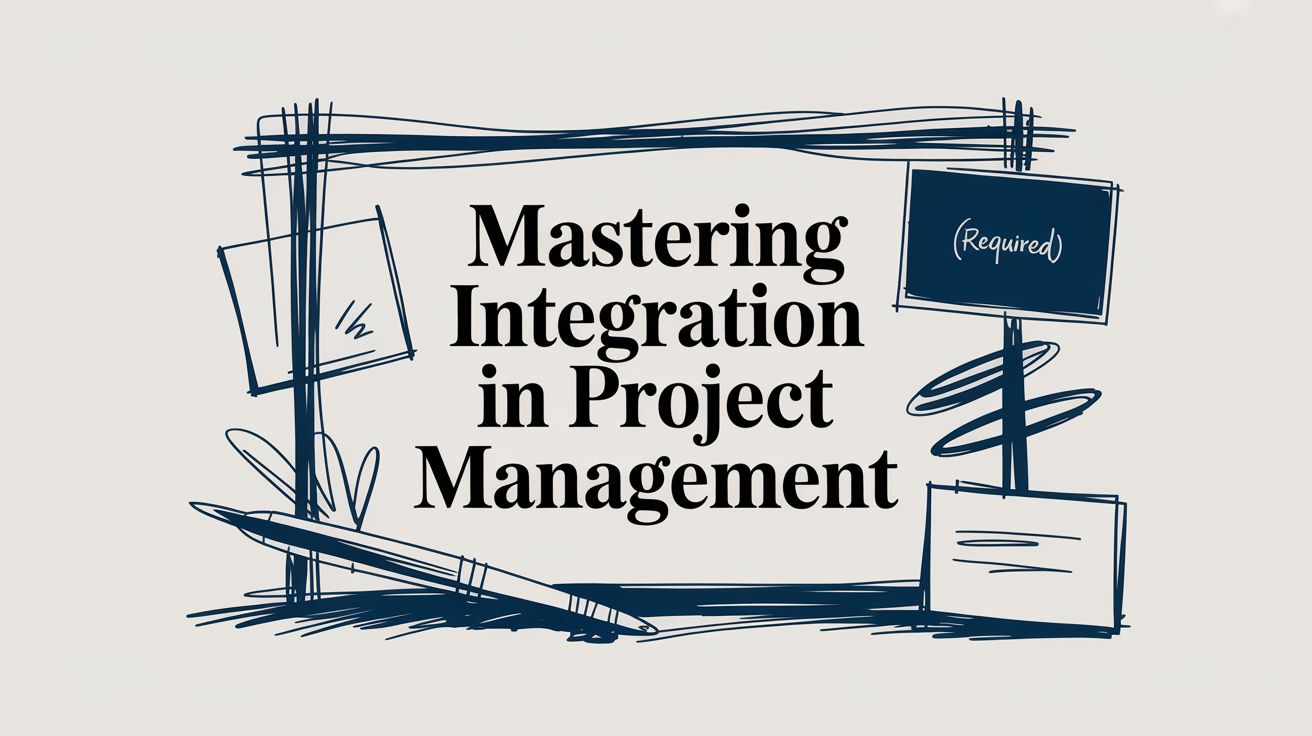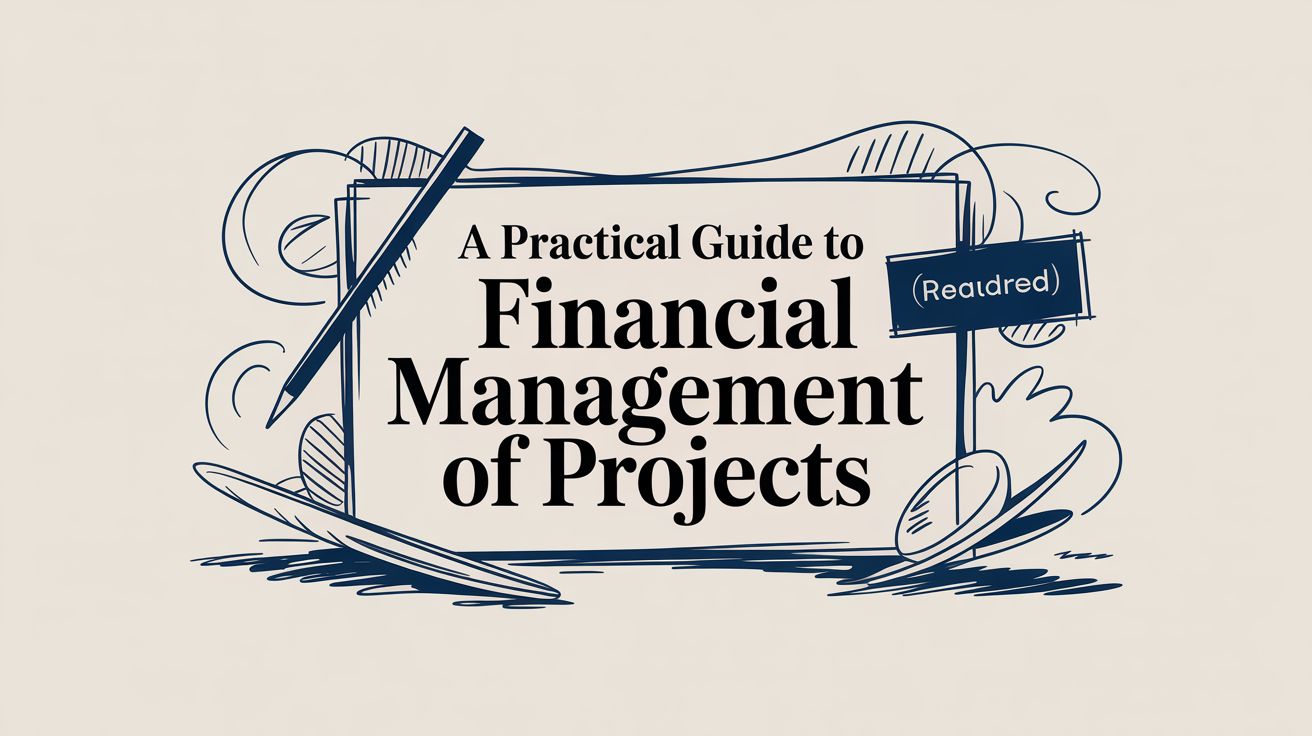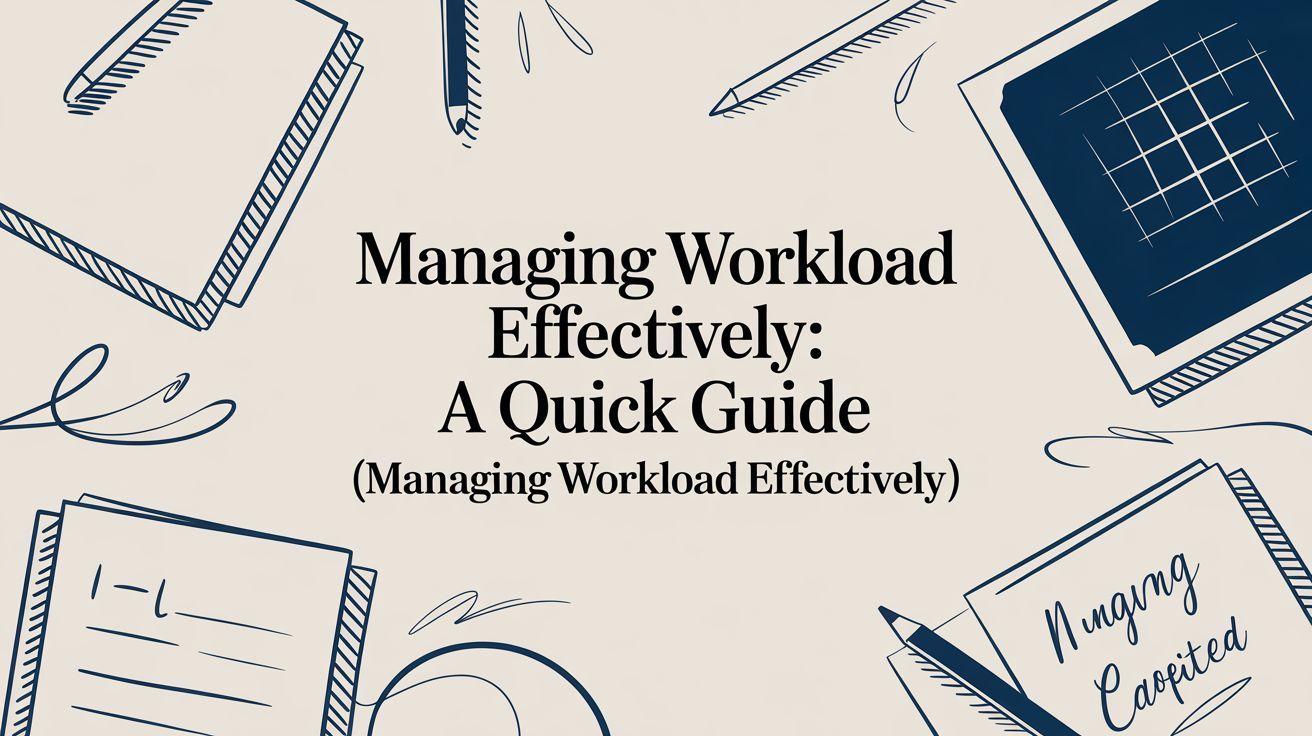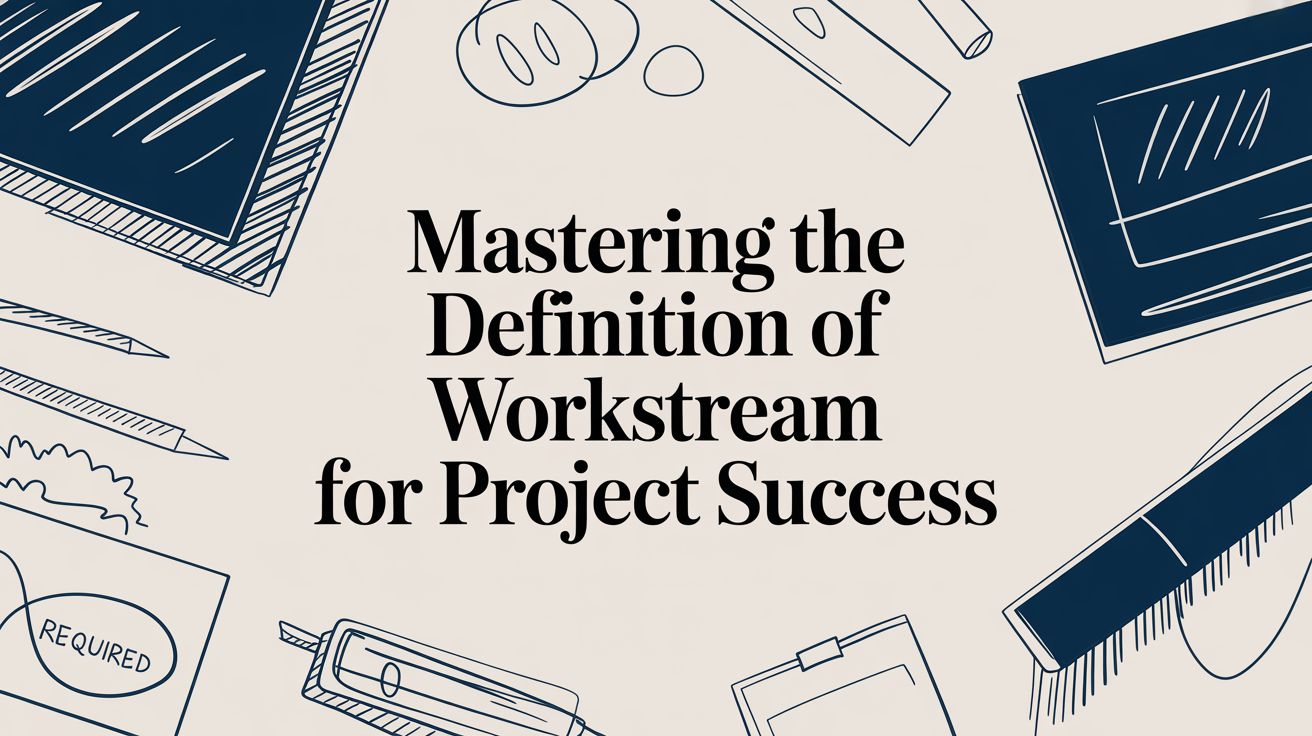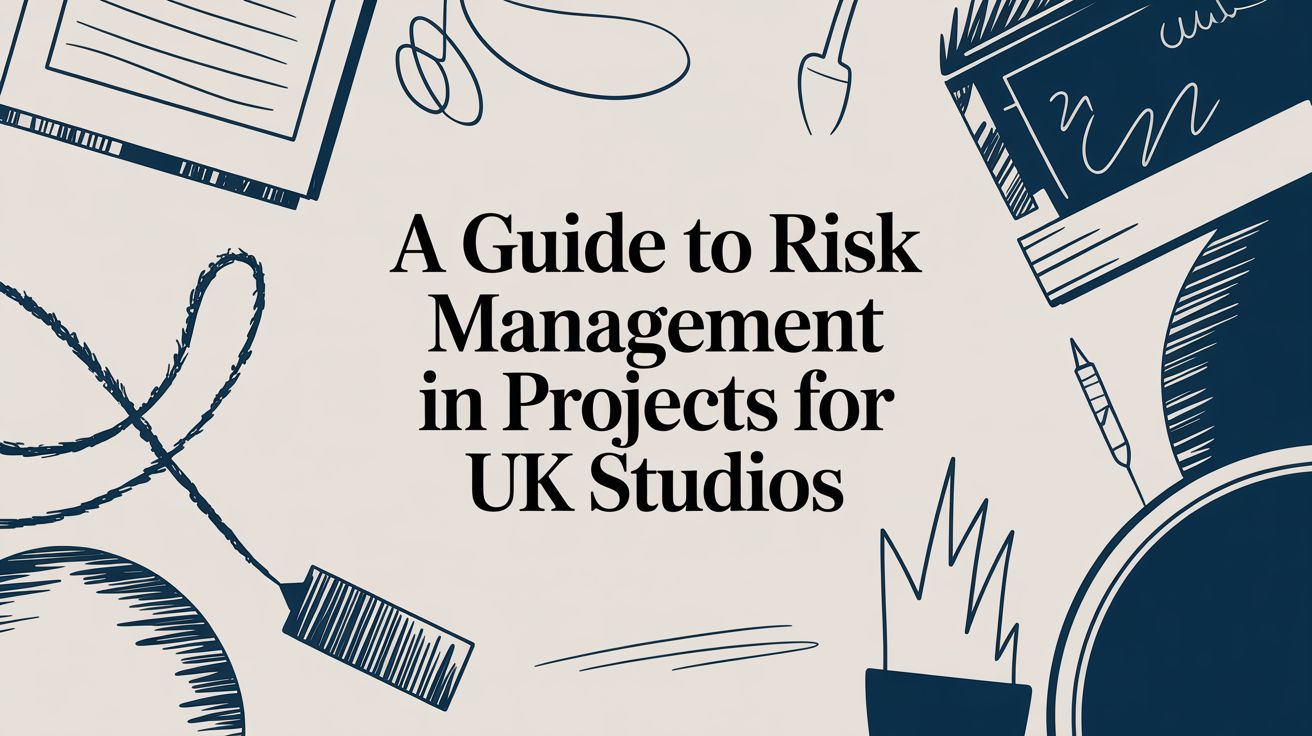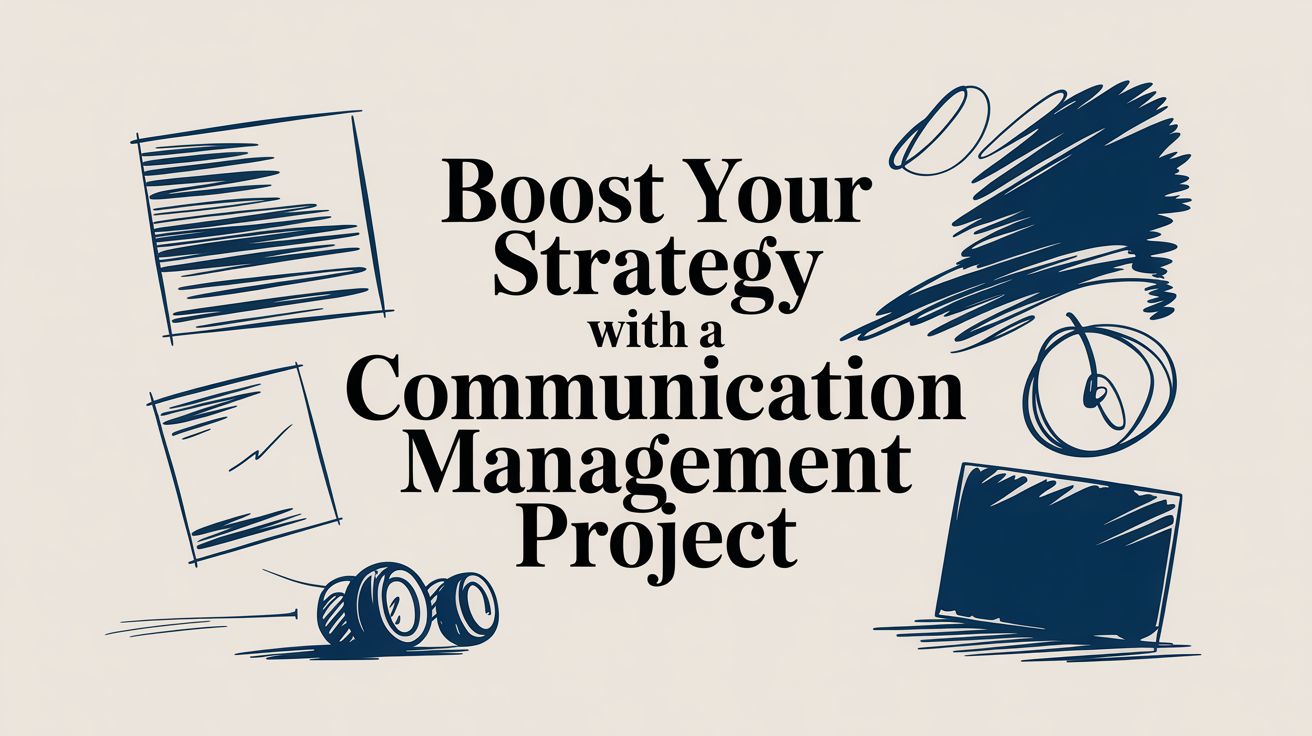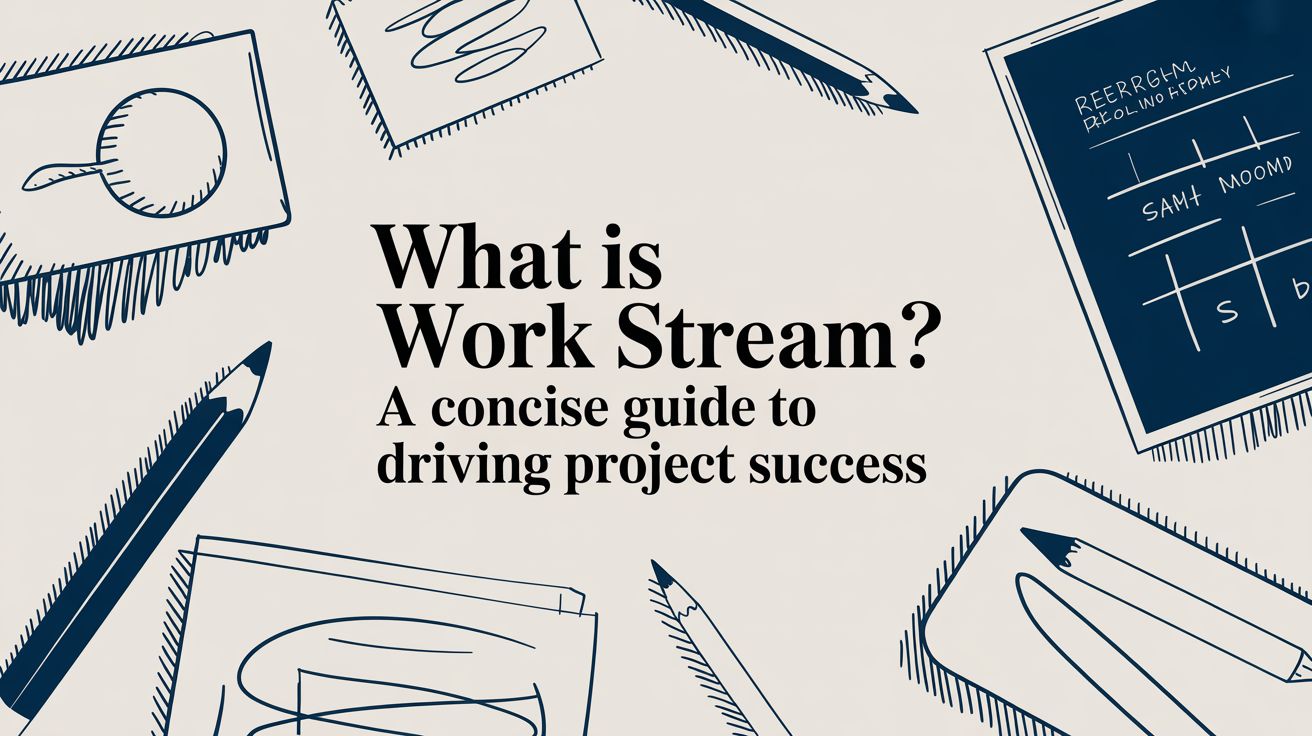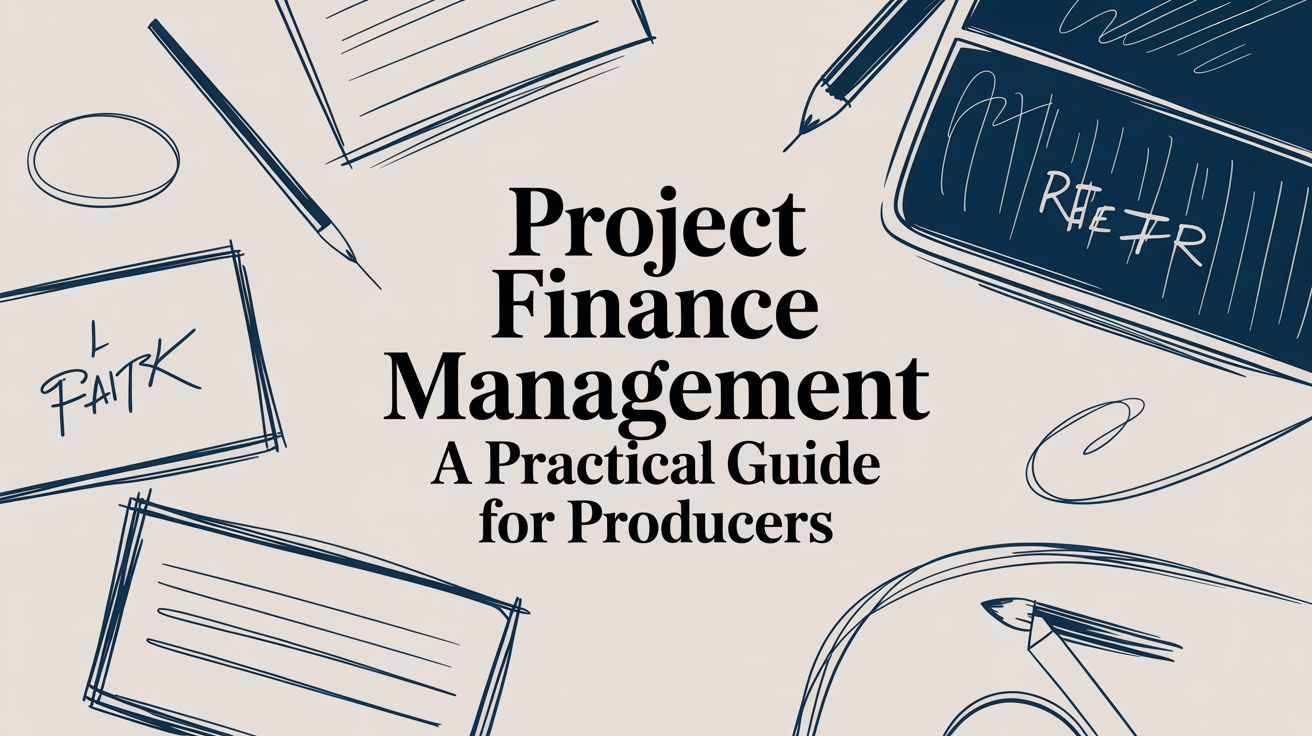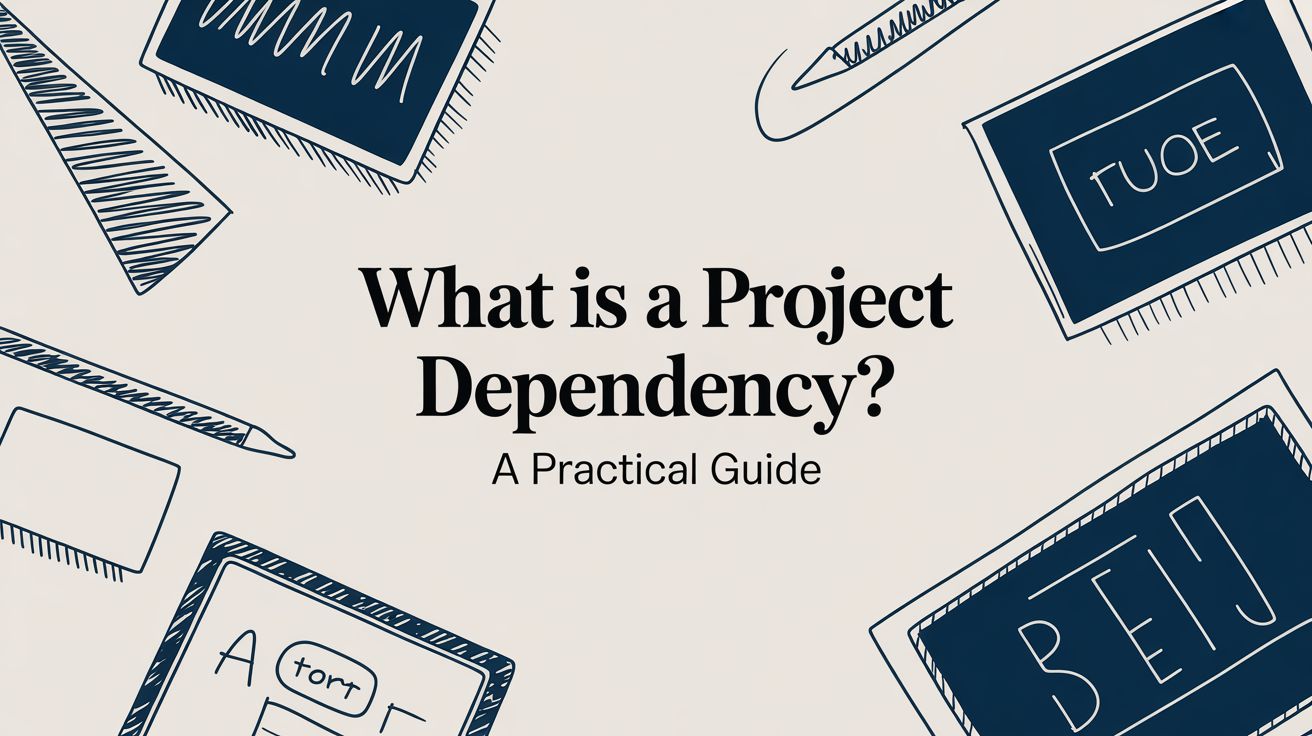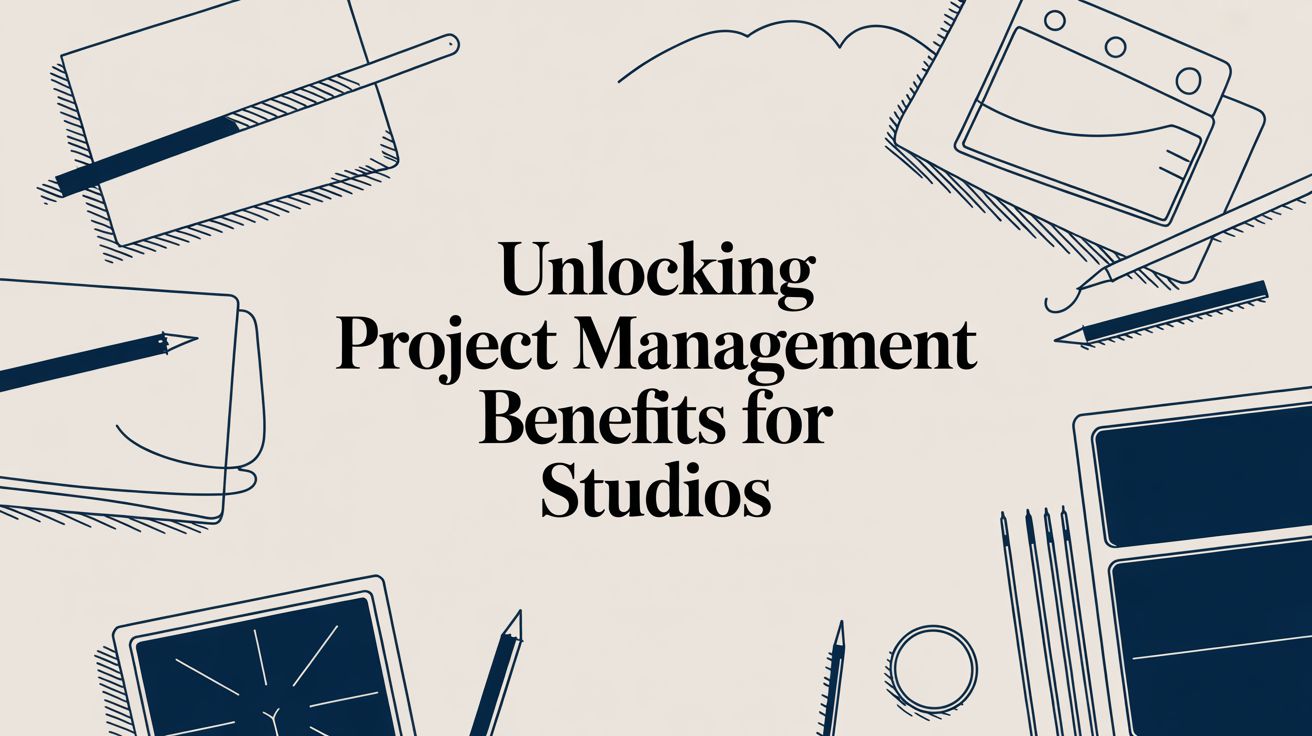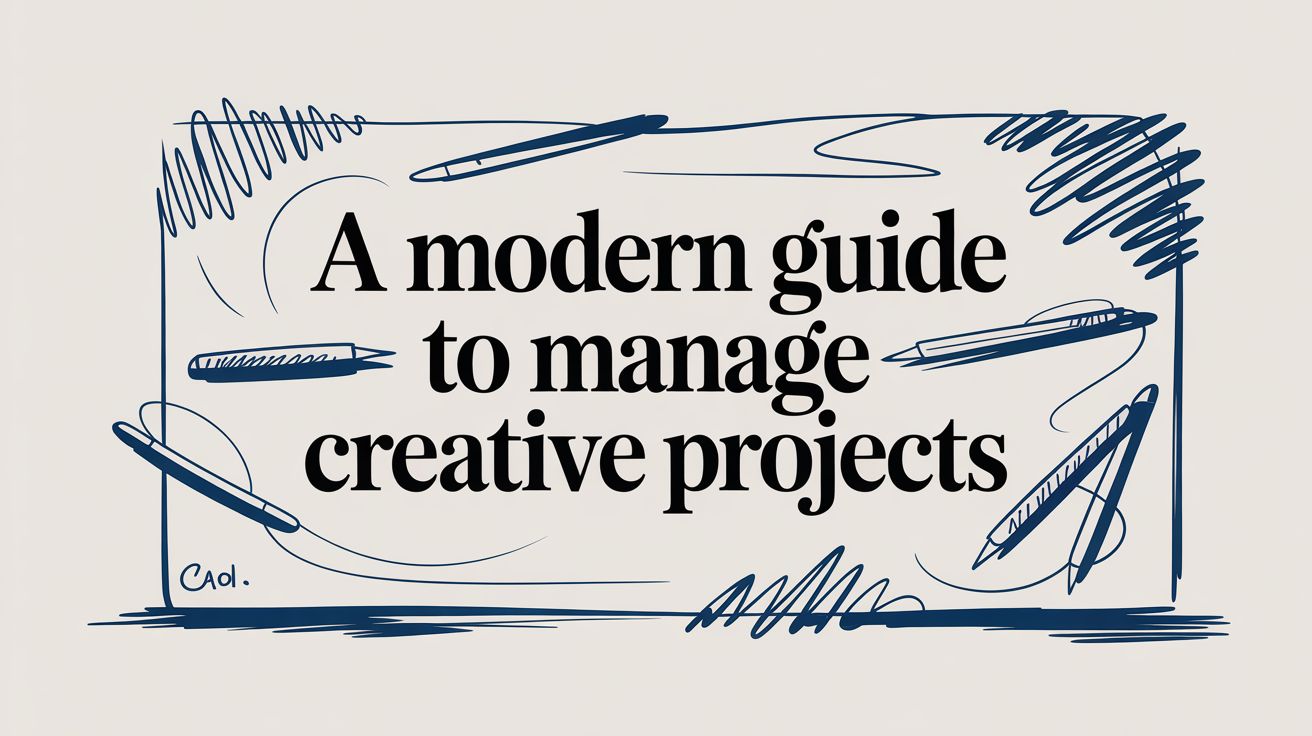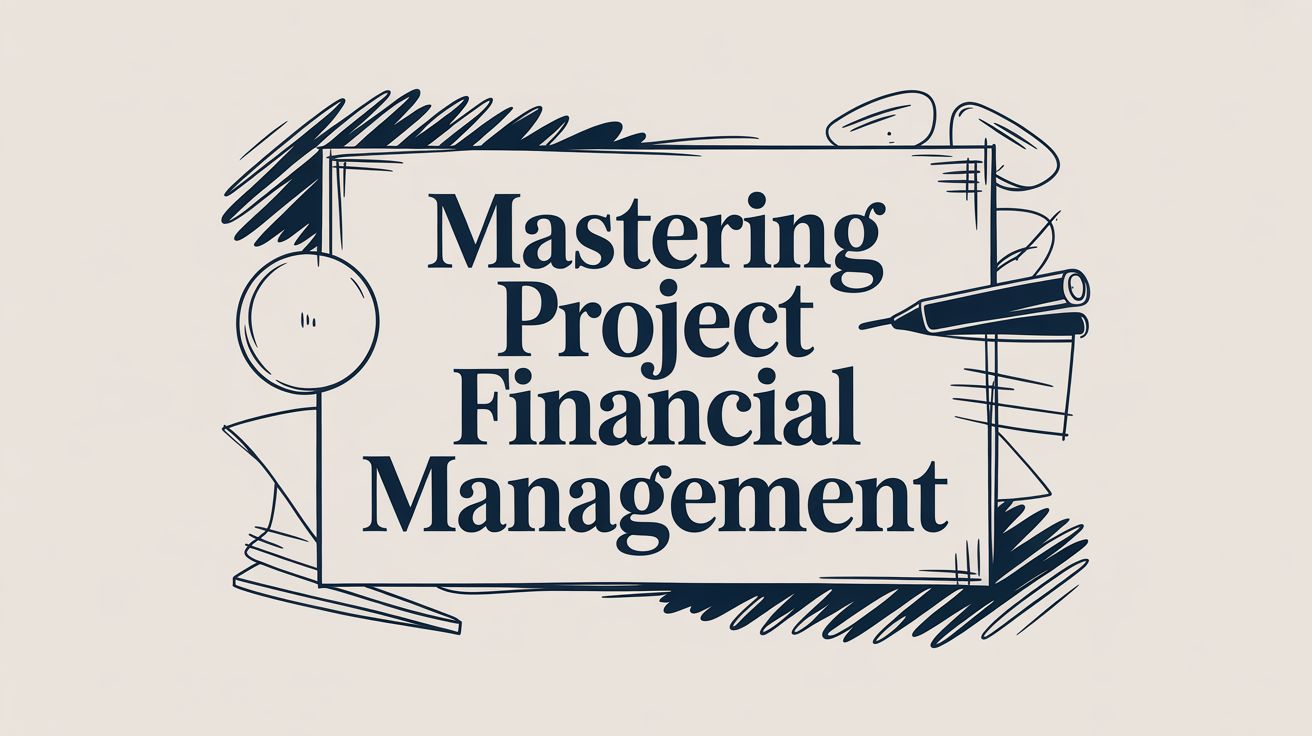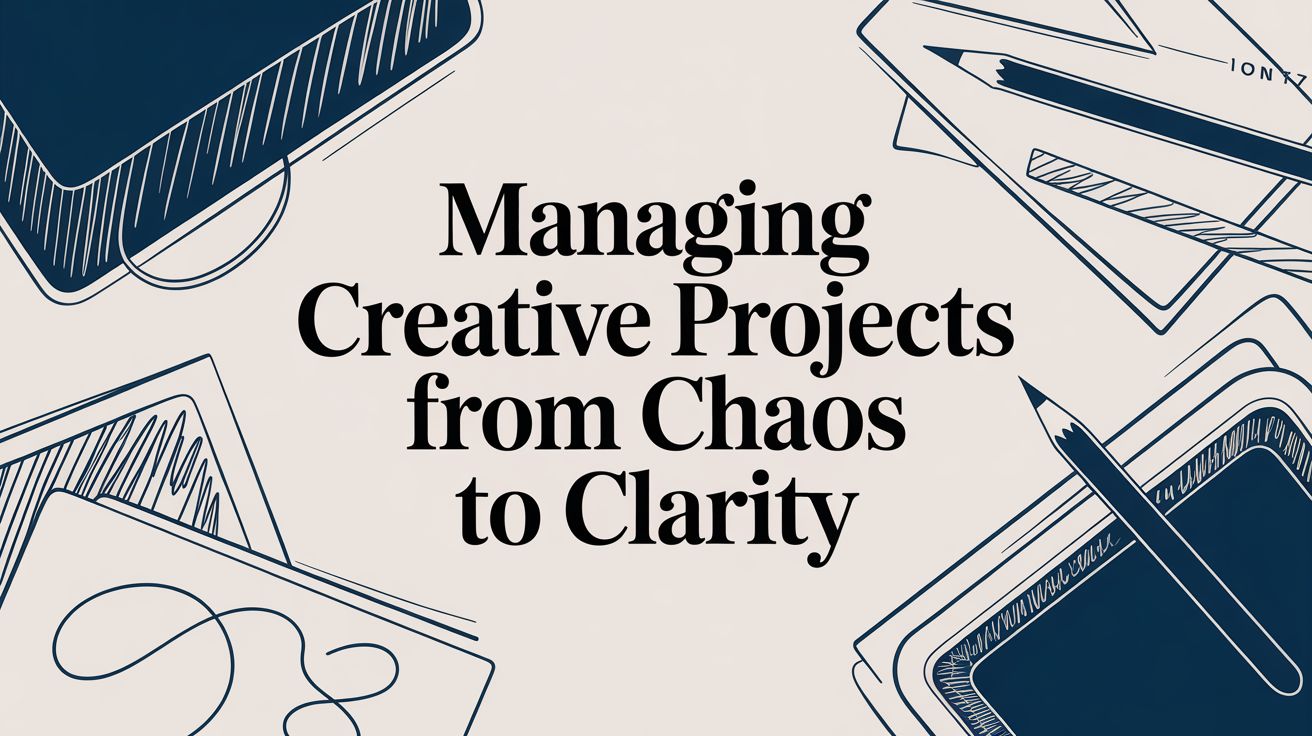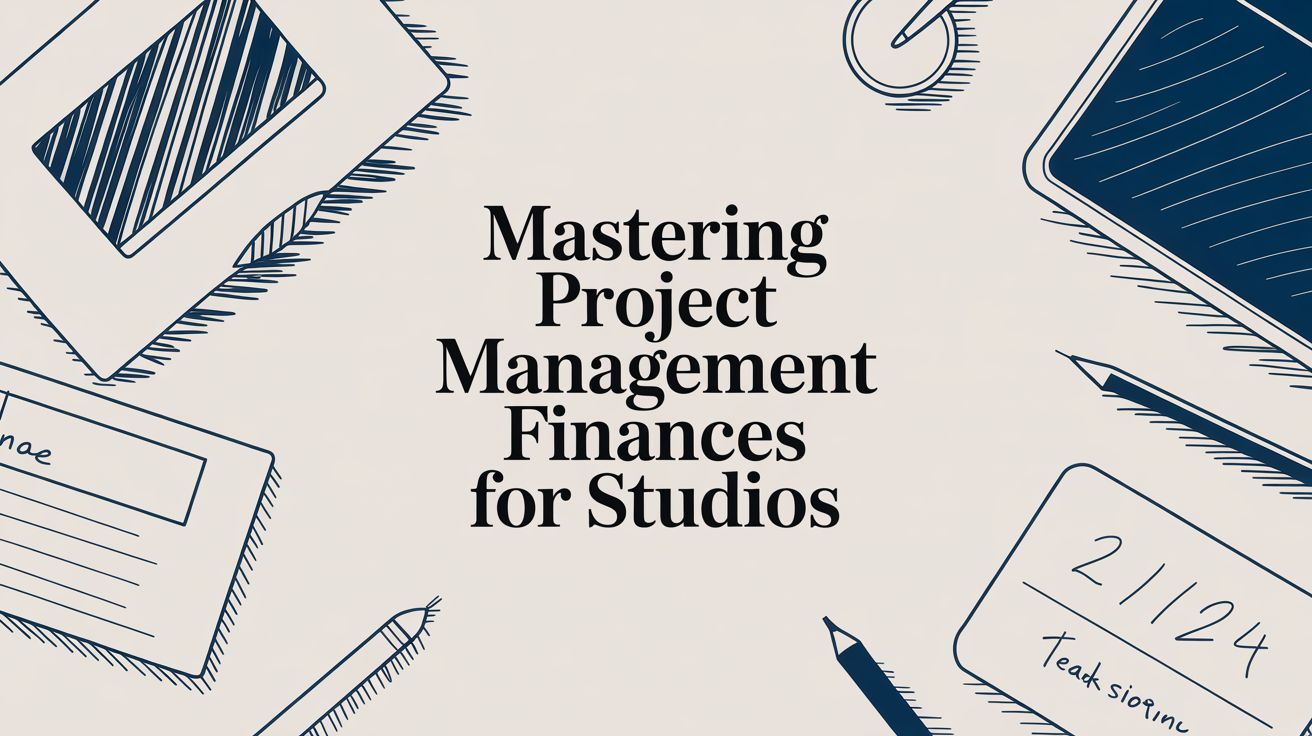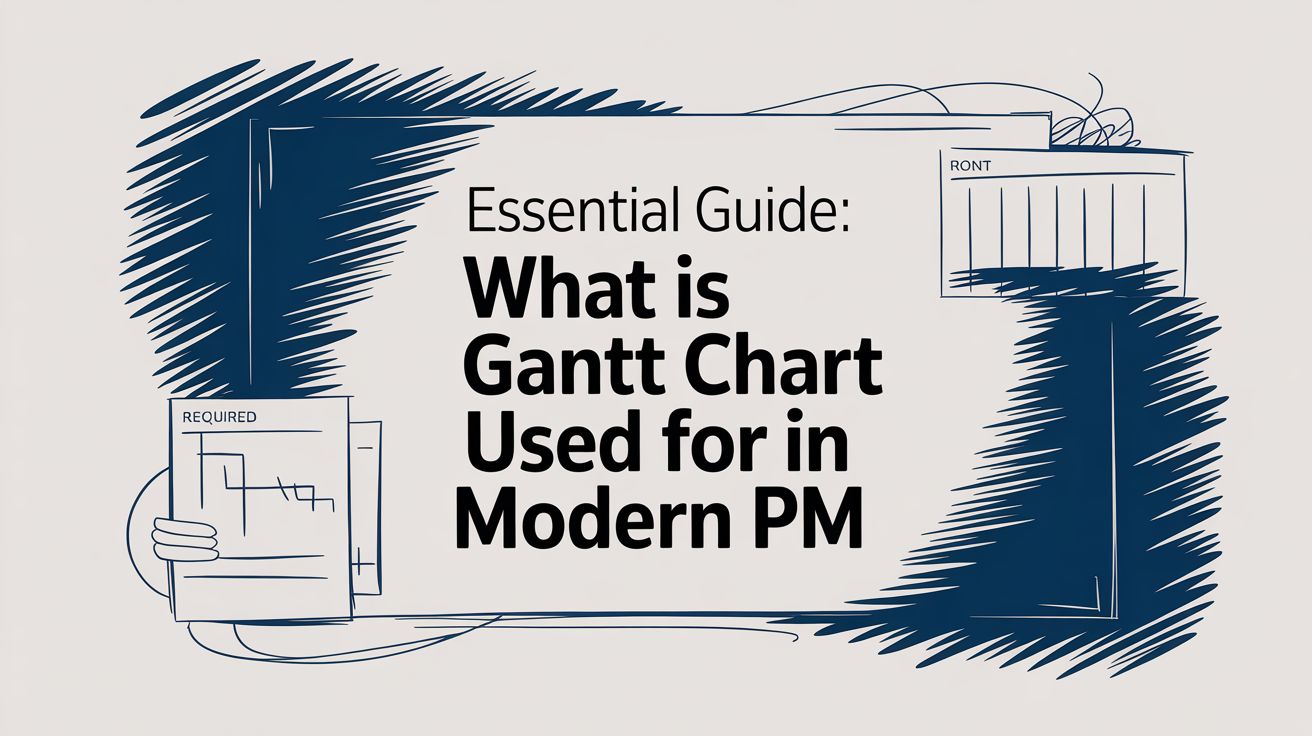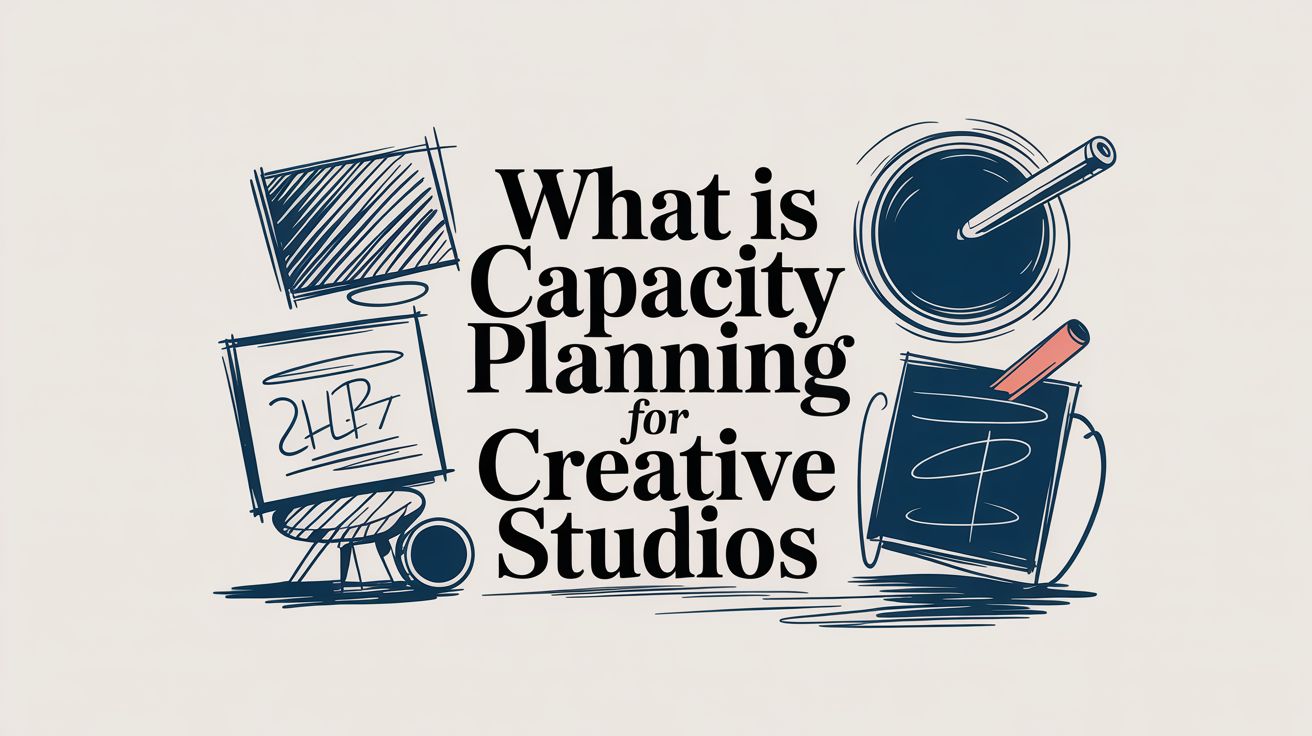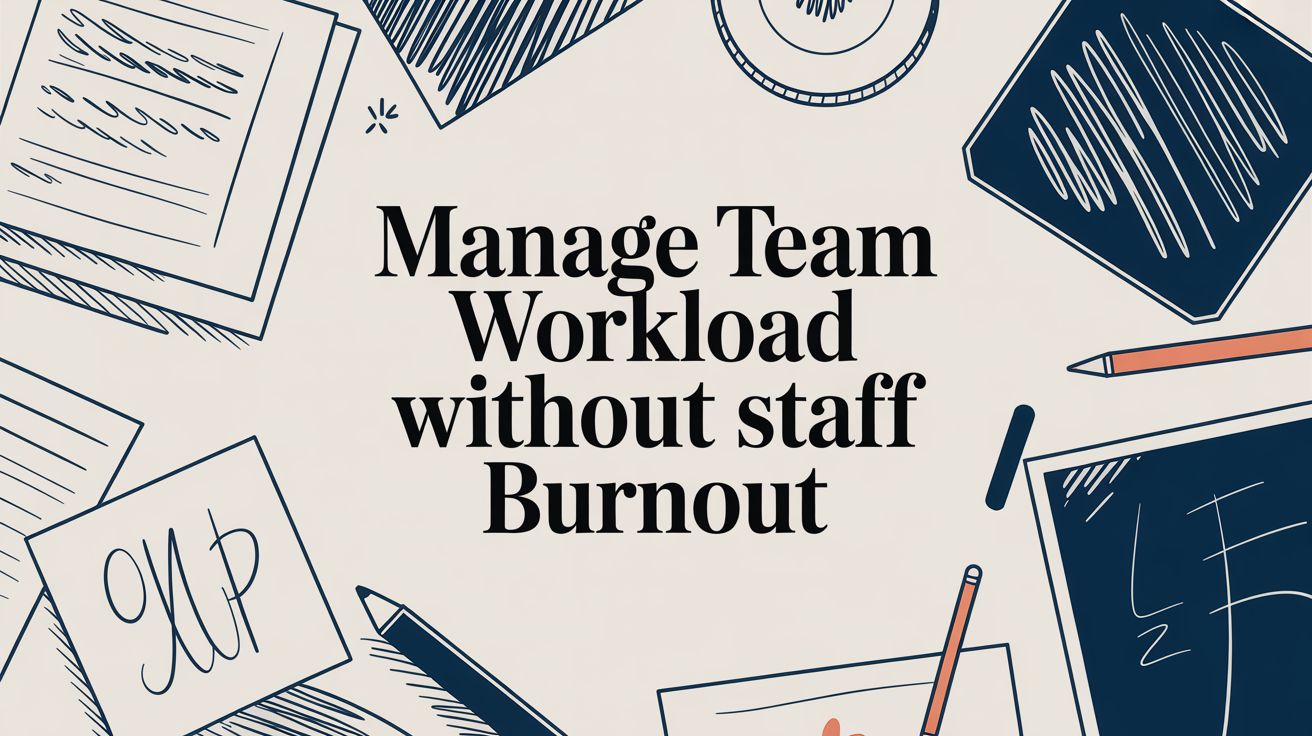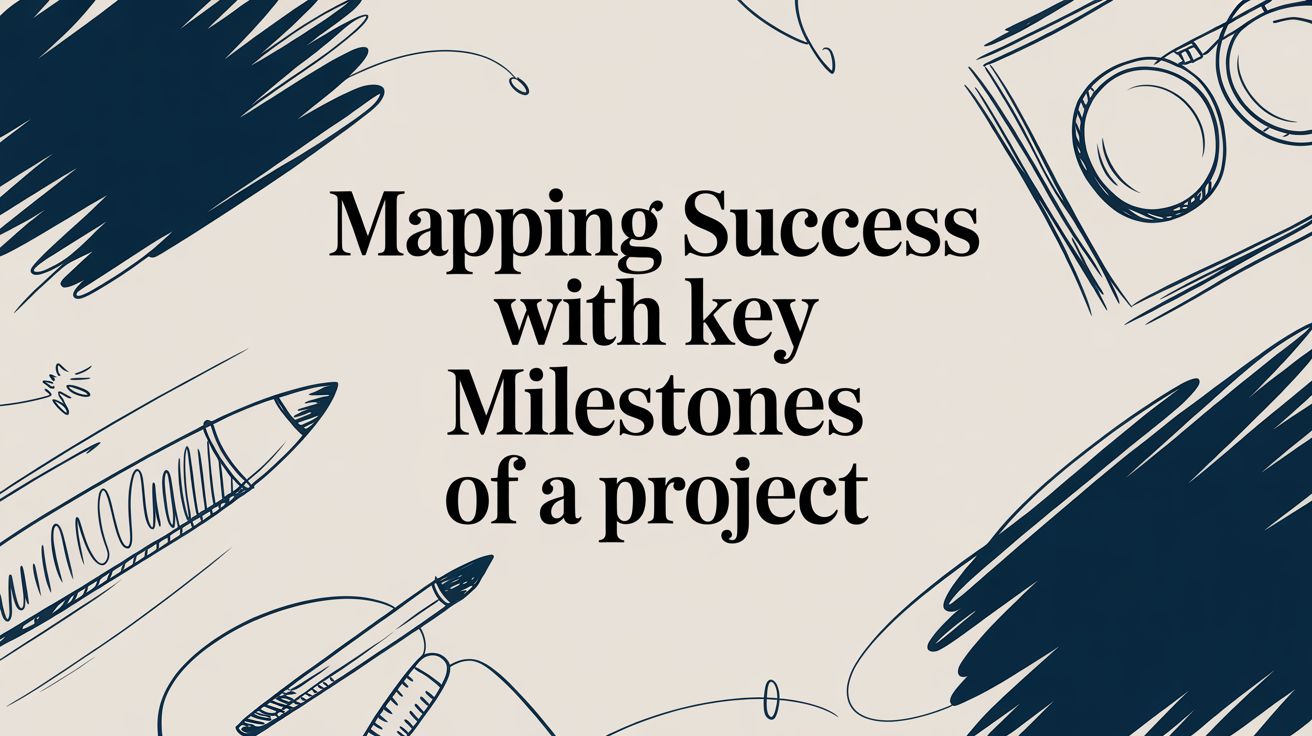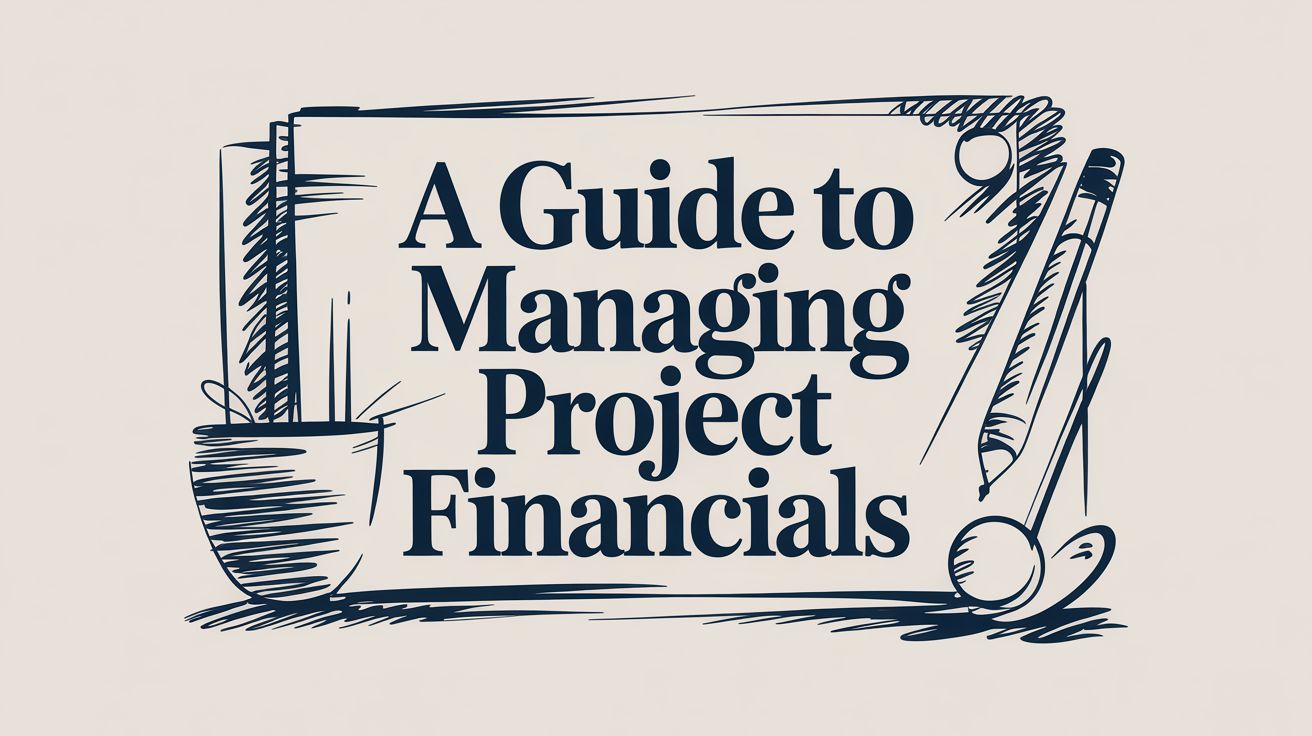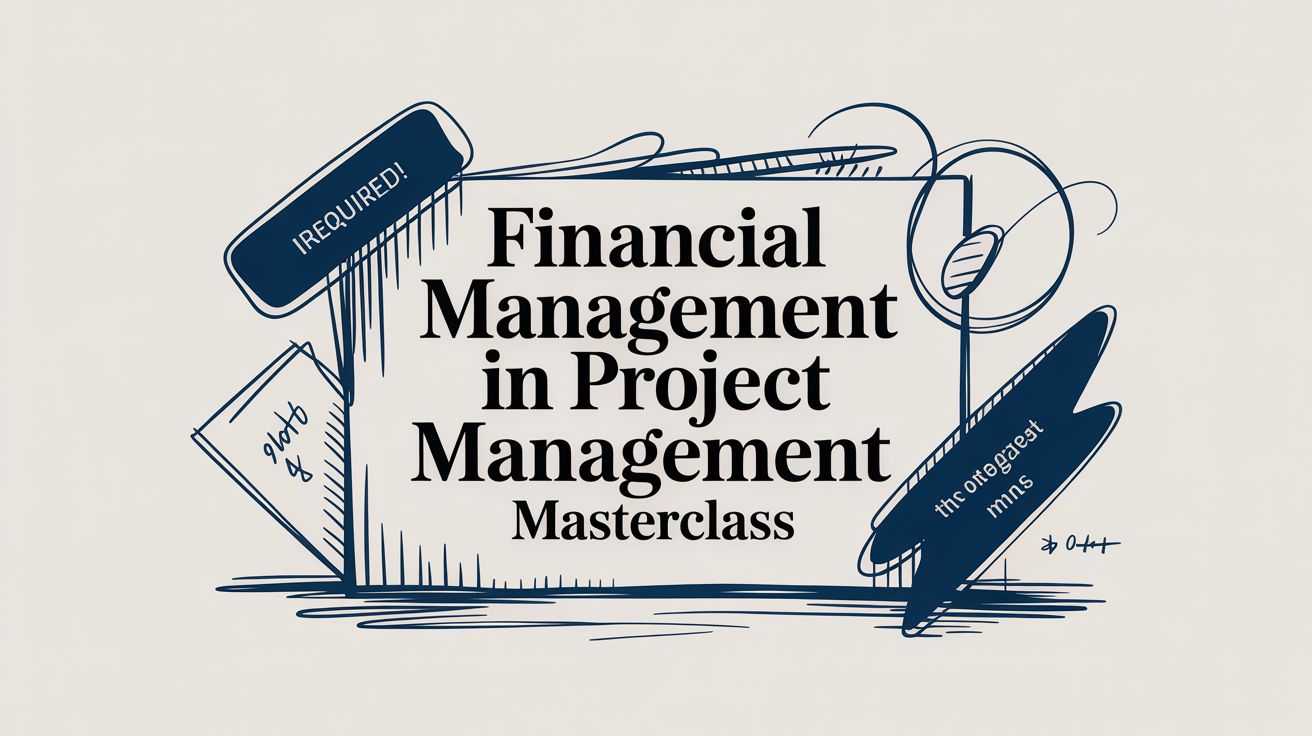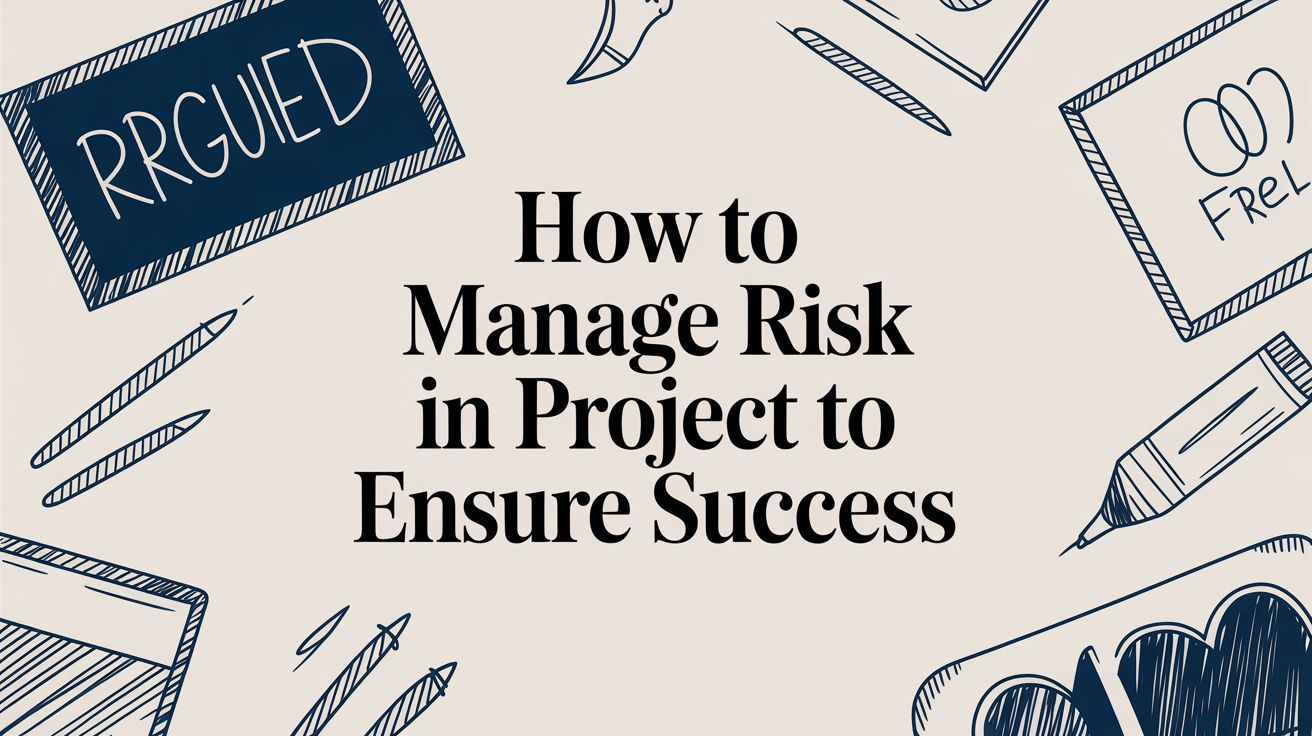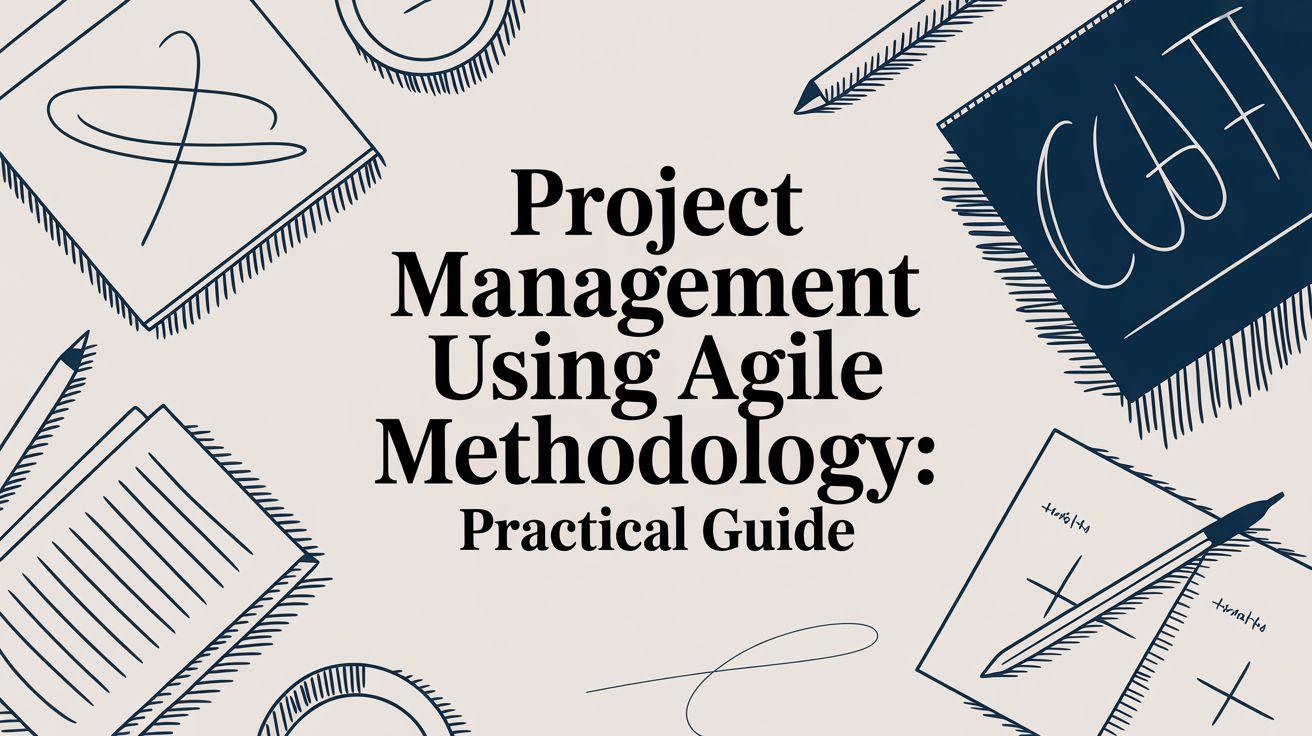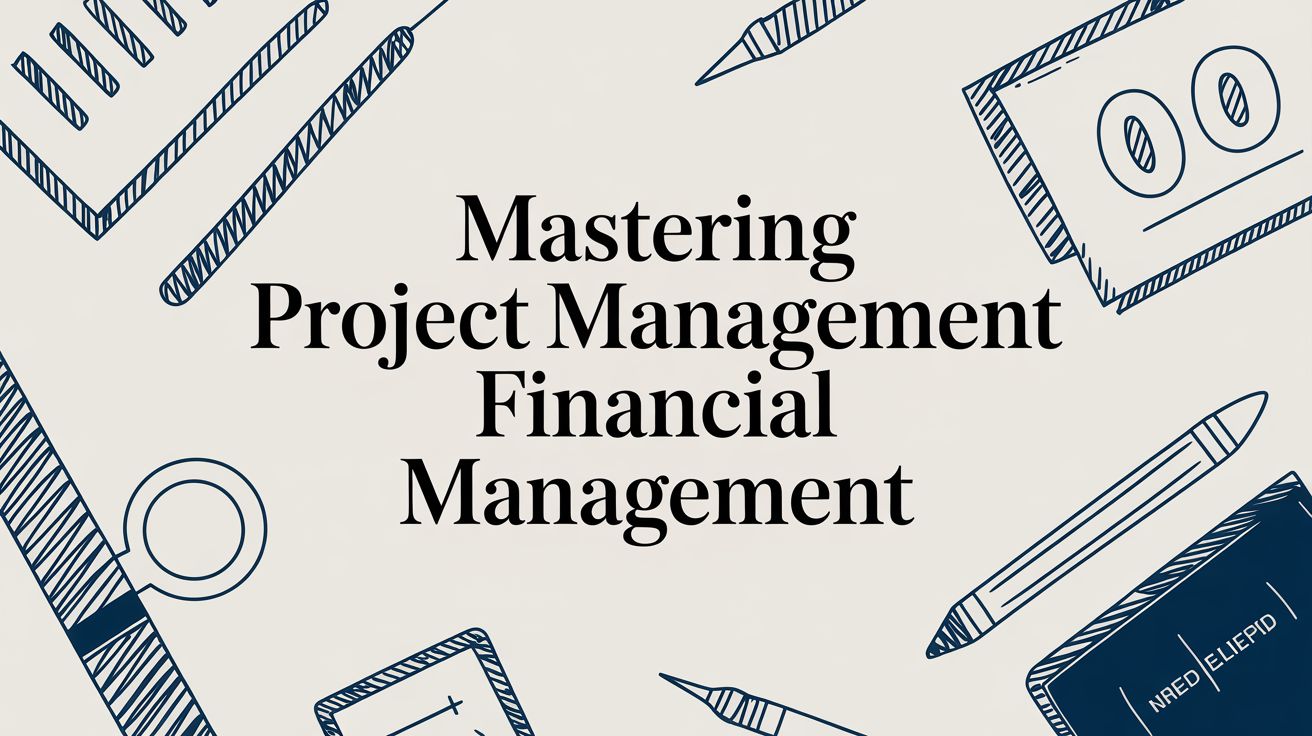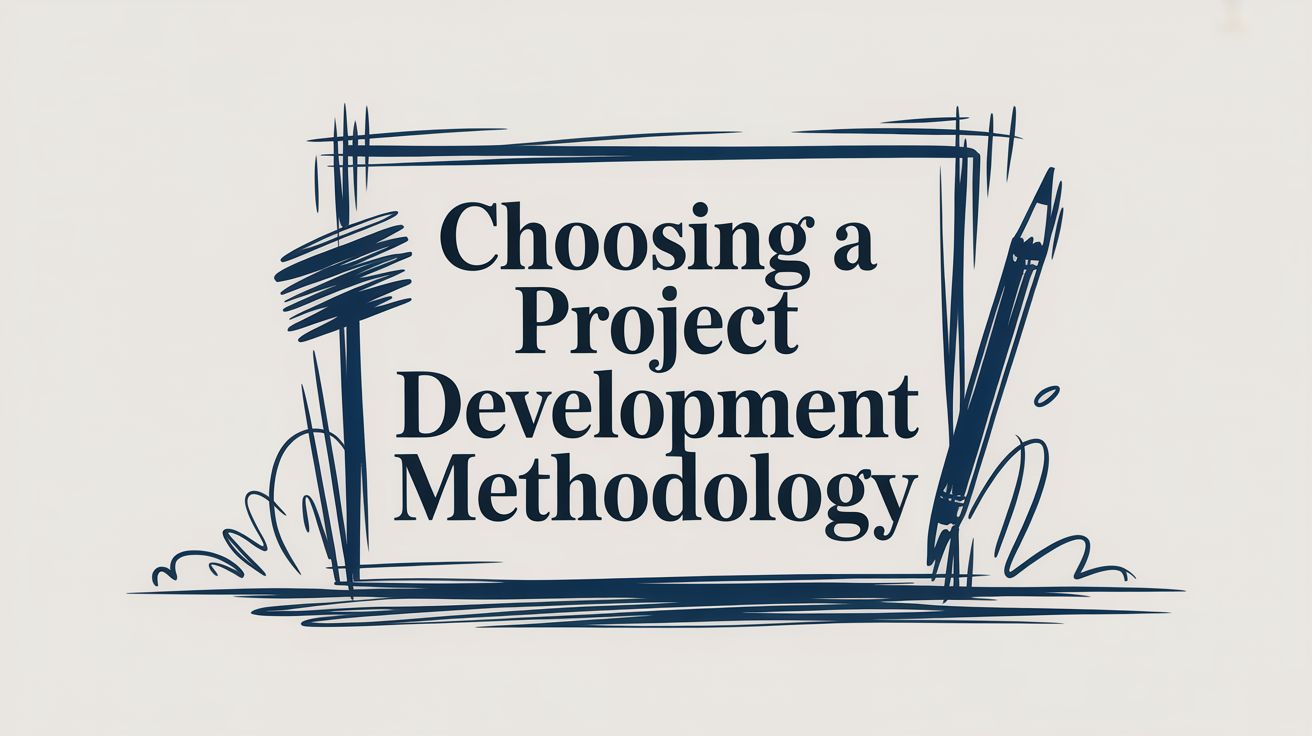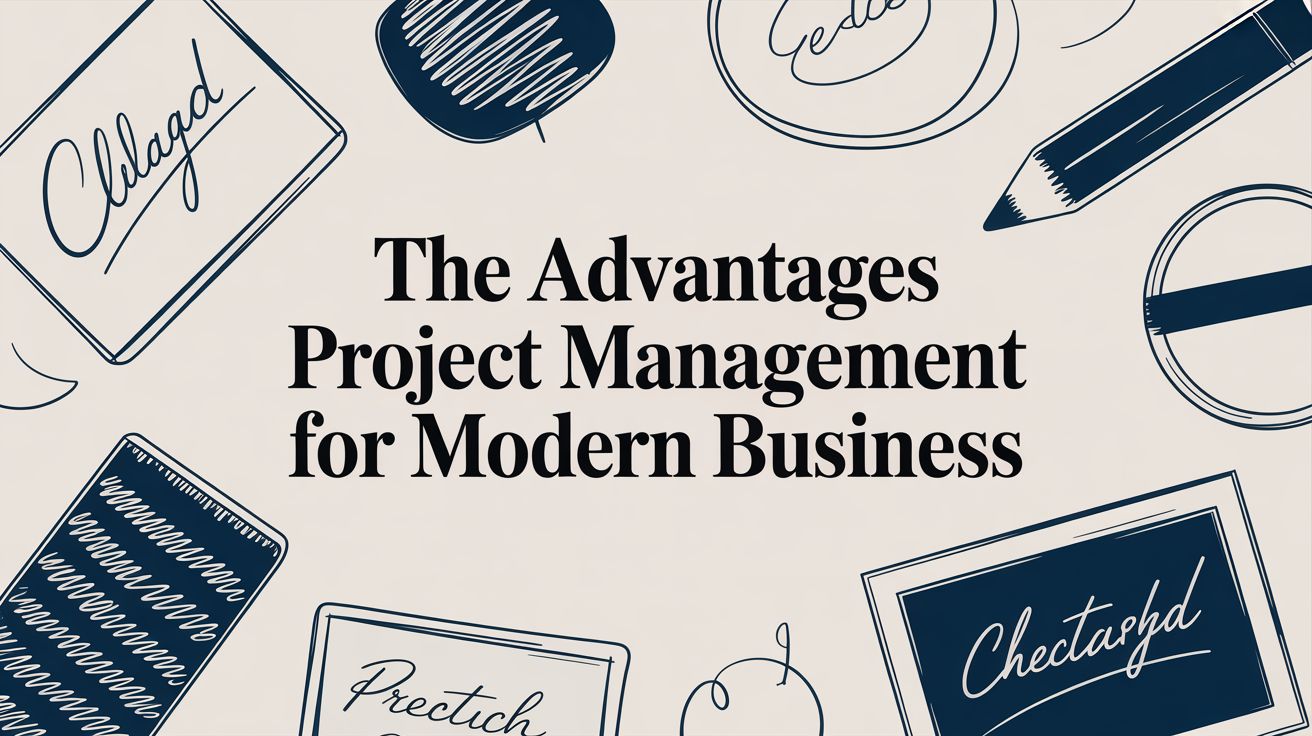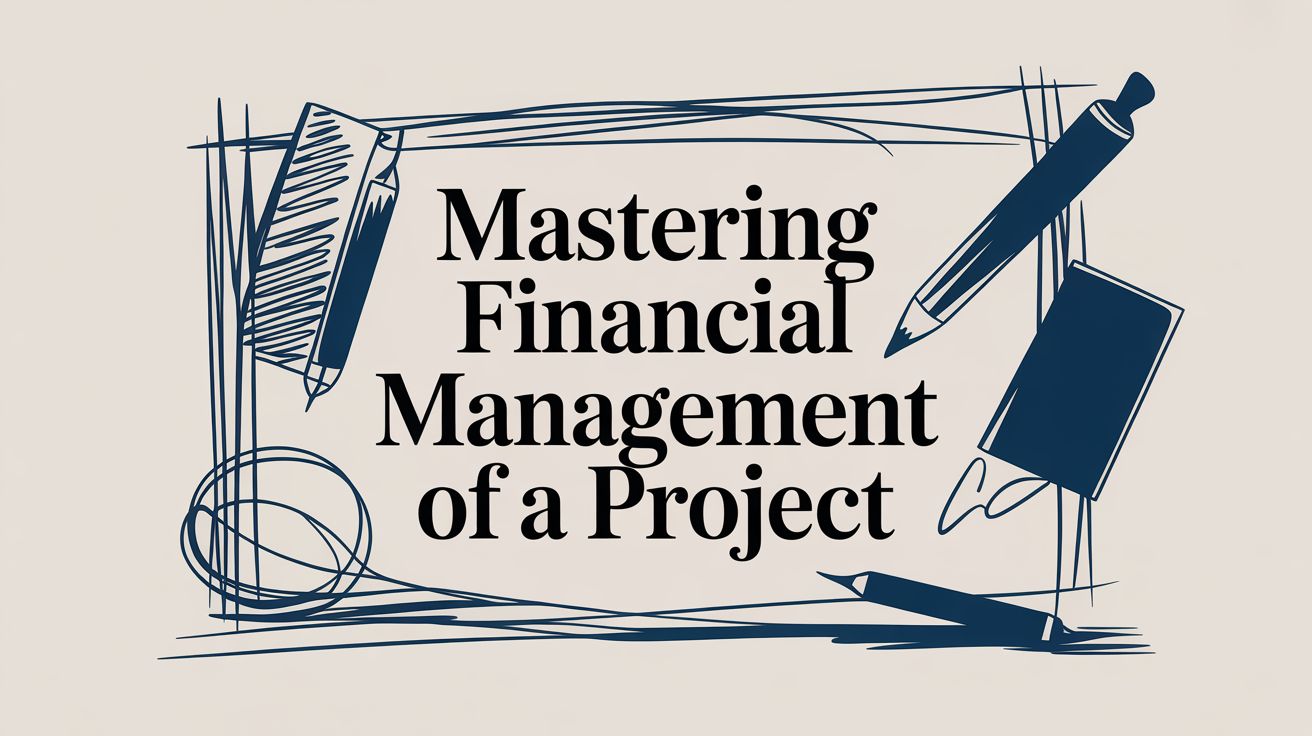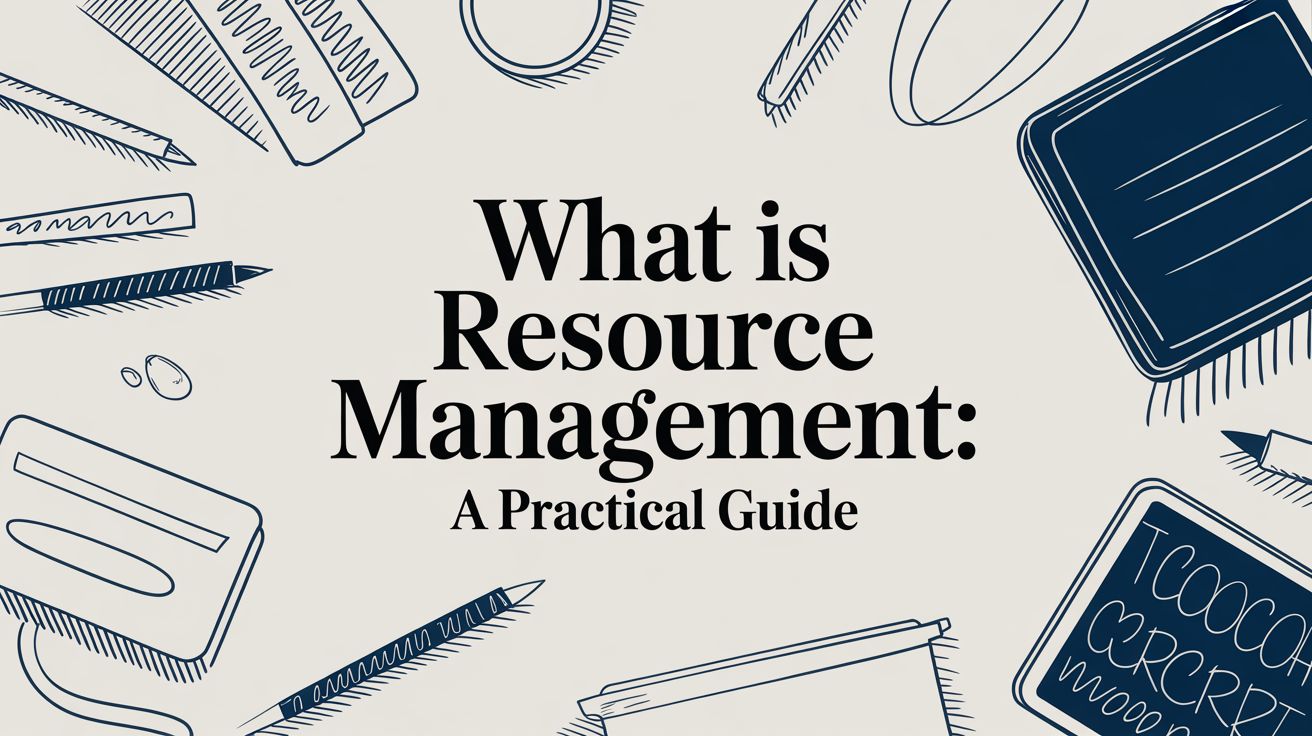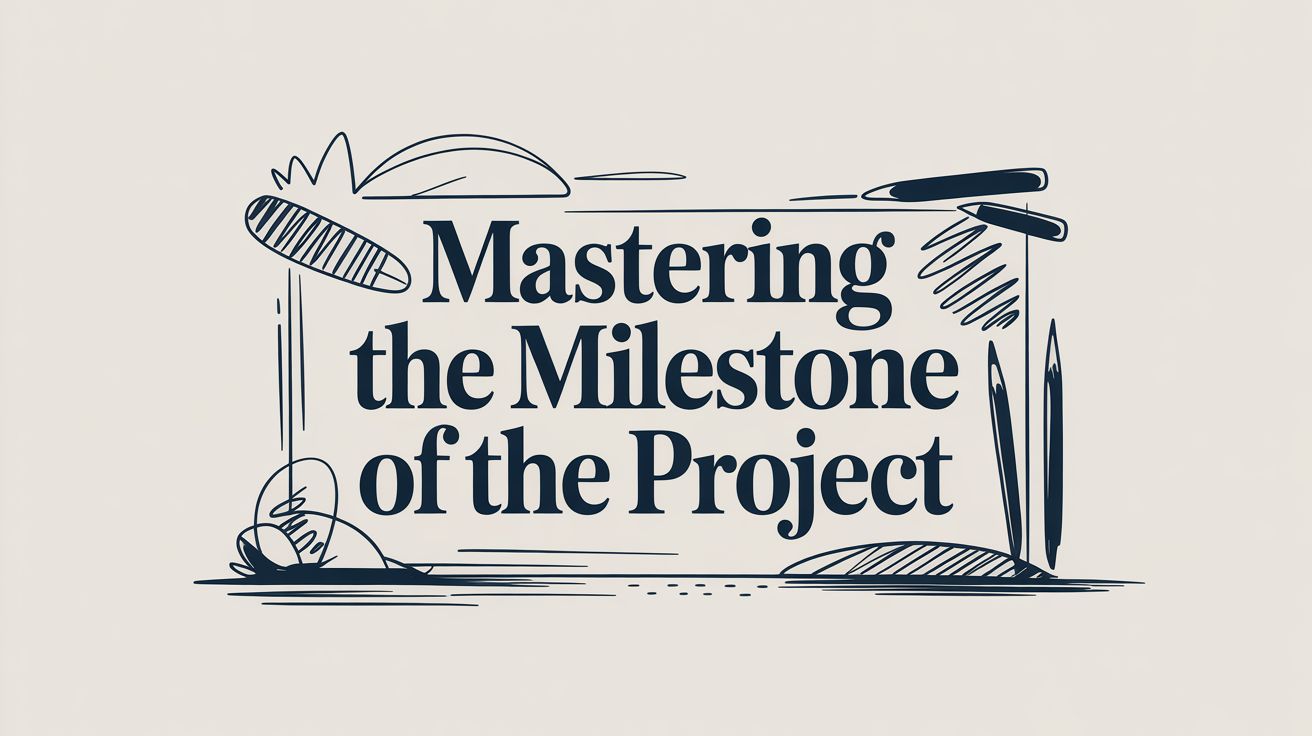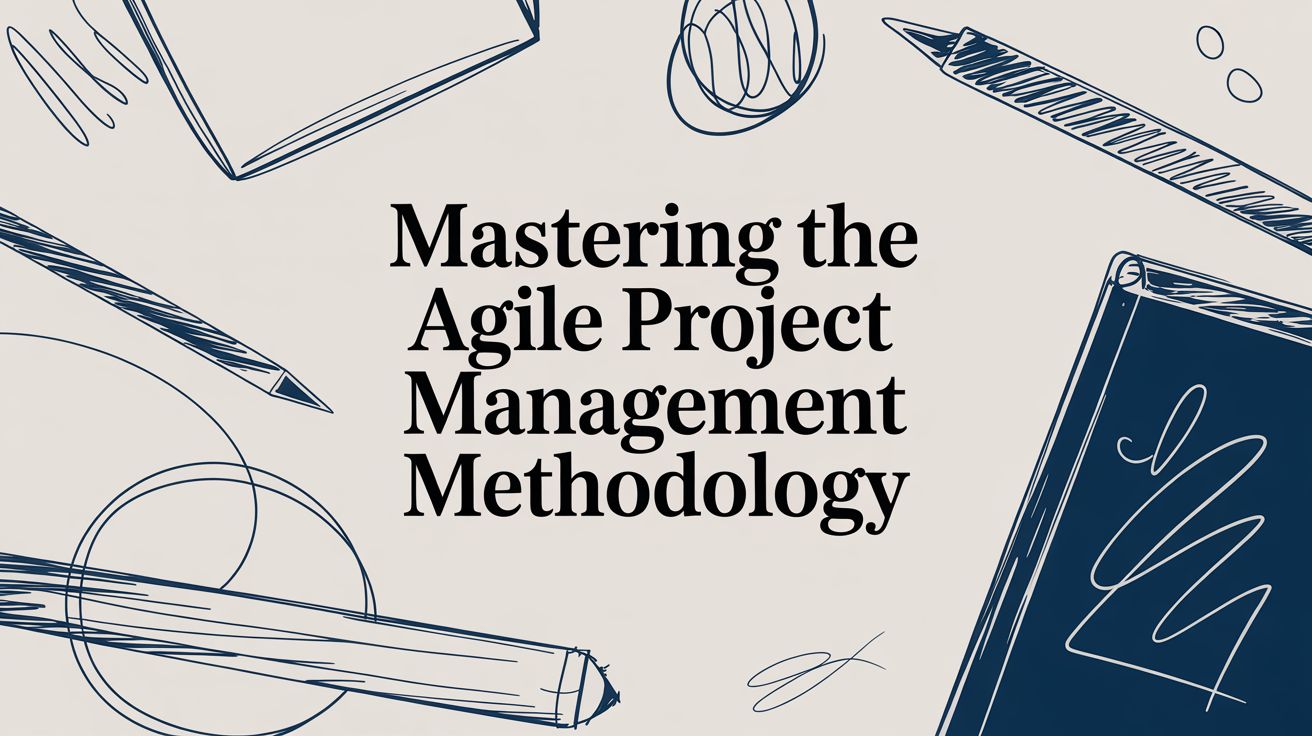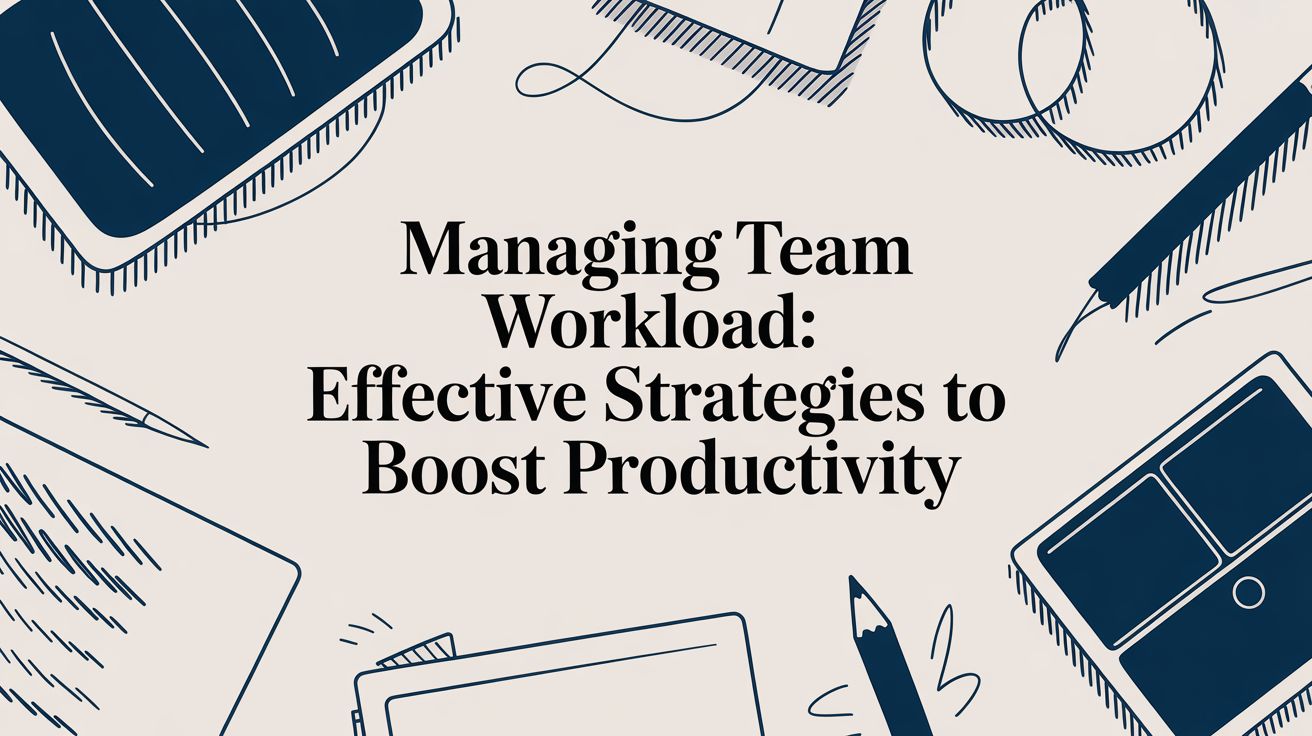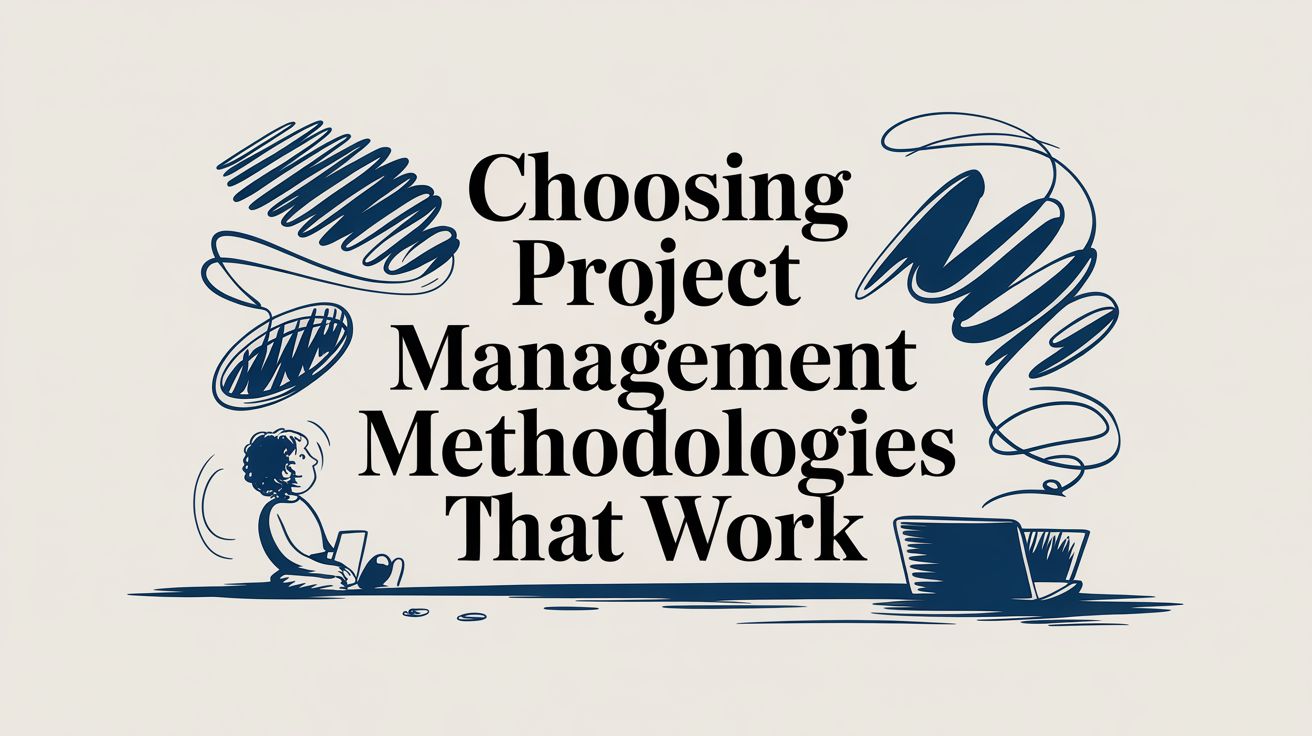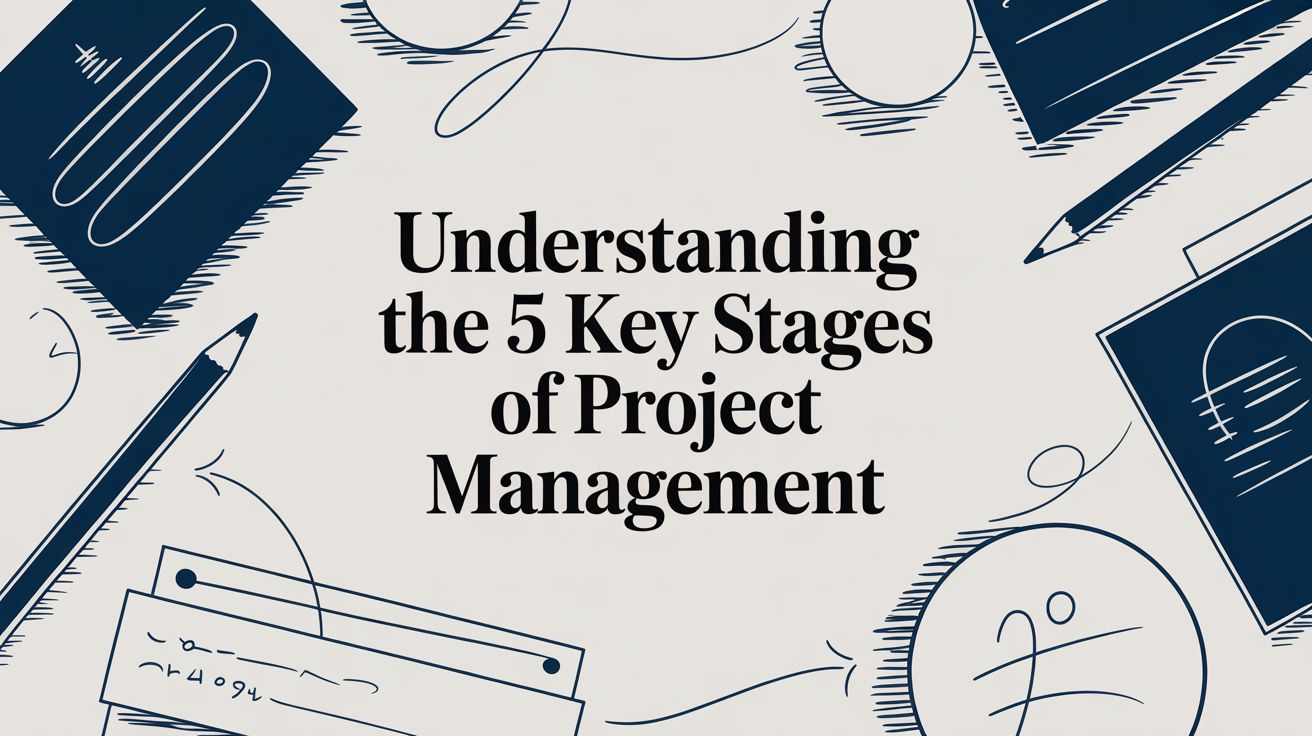So, what do we actually mean by integration in project management? At its heart, it’s the art of weaving together all the different threads of a project—the people, the processes, the tools, and the timelines—into a single, unified fabric. It's the central nervous system that keeps everything communicating and moving in the right direction.
This isn't just about plugging one piece of software into another. It’s about creating total clarity and alignment across the board.
Unifying Your Project for Peak Performance
Picture a symphony orchestra where every musician is playing from a different sheet of music. The result would be an absolute racket. A project without solid integration is no different—you end up with disconnected teams, conflicting priorities, and a whole lot of wasted effort.
Integration in project management is the conductor's role. It’s about bringing order to all that beautiful complexity, making sure every single element is perfectly synchronised. It's the craft of making deliberate choices, of weighing up competing objectives and deciding on the best path forward. It means ensuring the output of one task flows seamlessly into the next, creating a smooth, efficient workflow from start to finish.
More Than Just Connecting Tools
While having the right technology is a huge help, real integration goes much deeper. It’s about building a solid framework that aligns every single part of the project's life. This framework is what allows communication to flow freely, keeps data consistent, and ensures everyone is pulling in the same direction towards the same strategic goals.
This infographic paints a great picture of the project manager as a conductor, orchestrating all the moving parts that need to come together.
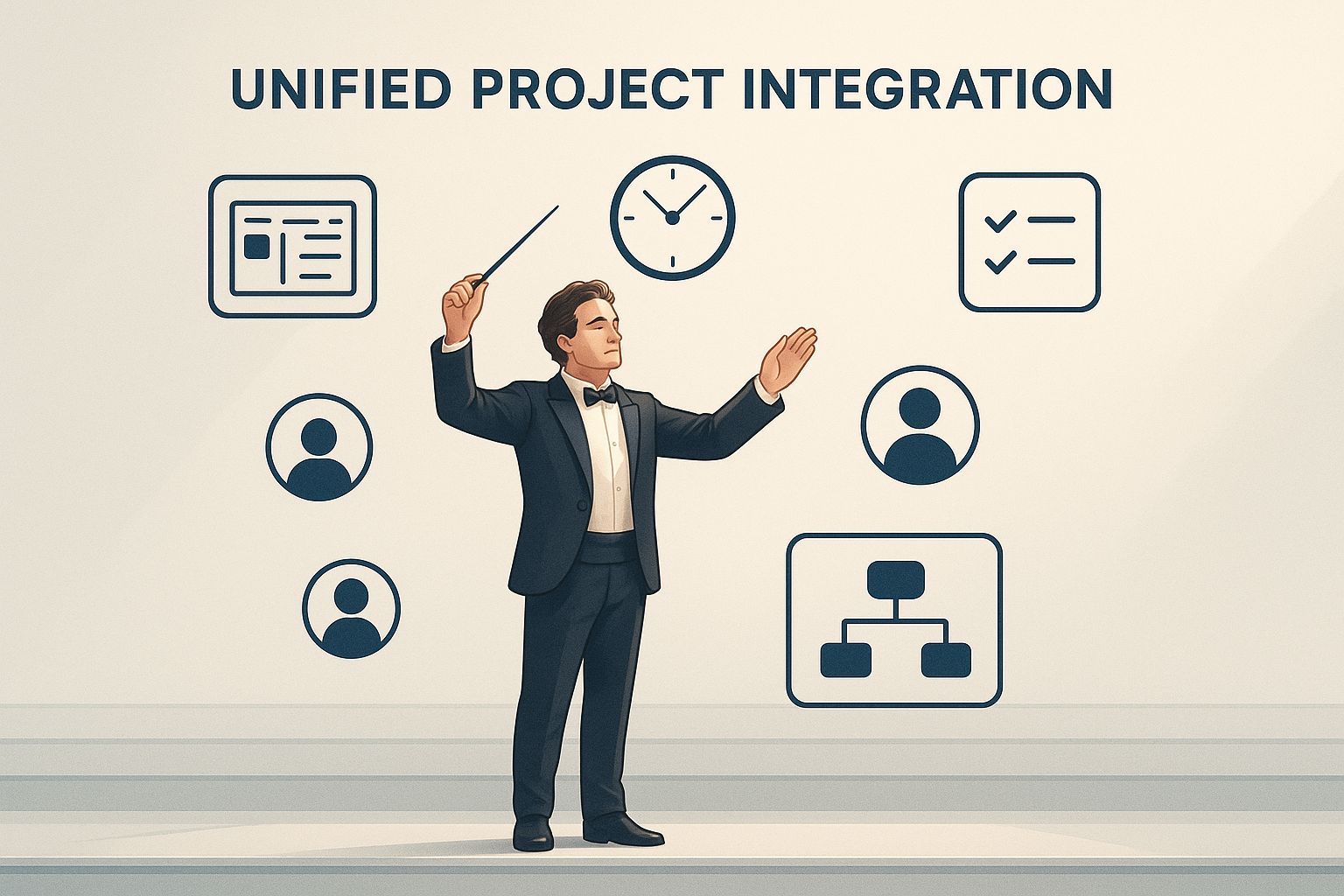
As you can see, integration acts as the central hub, turning a collection of separate components into a single, functional system that just works.
The whole point of integration is to manage the countless interdependencies within a project. It’s what ensures all the pieces of the puzzle fit together perfectly, preventing the gaps and overlaps that can completely derail progress and send budgets spiralling.
Ultimately, this strategic function is what separates a well-oiled project from a chaotic one. It involves a few key activities that a project manager needs to nail:
- Developing the Project Charter: This formally kicks off the project and documents the initial high-level requirements.
- Creating the Project Management Plan: This brings all the smaller, subsidiary plans together into one comprehensive master document.
- Directing and Managing Project Work: This is about leading the team to actually execute the plan and produce the deliverables.
- Monitoring and Controlling Project Work: You have to constantly track progress, review performance, and make smart adjustments along the way.
- Performing Integrated Change Control: This involves carefully managing all change requests to minimise disruption to the project.
- Closing the Project or Phase: This means finalising all activities to formally wrap up the project or a specific phase.
By getting these elements right, project managers can make sure resources are used effectively, stakeholders stay on the same page, and the final result actually delivers on its promise.
The Three Pillars of Integrated Project Management
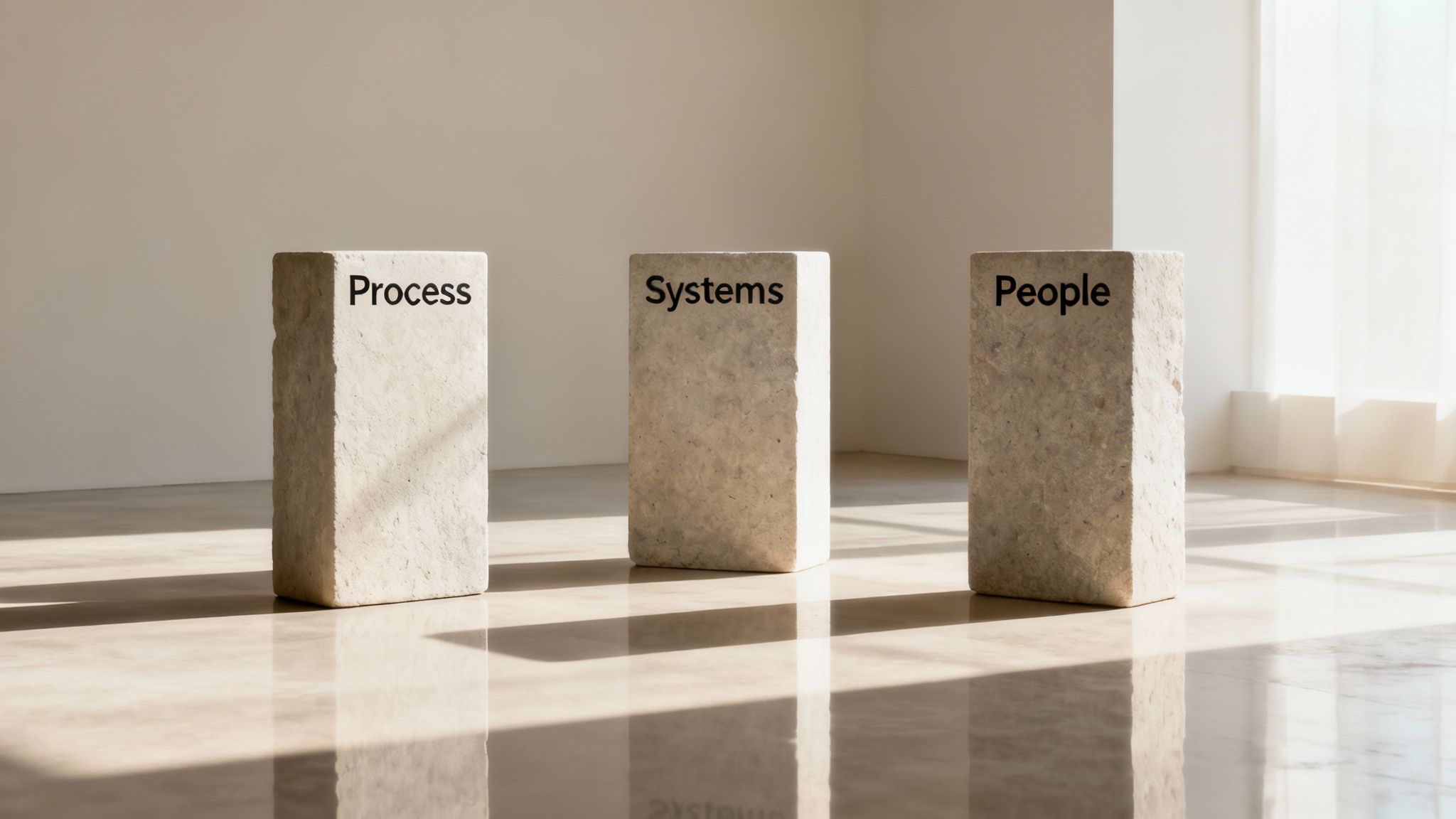
Real integration in project management isn't just a single action you take; it’s a balanced strategy built on three essential pillars. When these components work together in harmony, they create a powerful, synergistic effect that can completely transform how your projects perform.
Let's break them down.
Pillar 1: Process Integration
The first pillar, Process Integration, is all about creating a seamless operational flow from start to finish. Think of it like a perfectly designed assembly line, where each stage of a project connects logically and smoothly to the next. The goal here is to align every project phase, activity, and workflow to get rid of friction and delays.
For instance, the handover from the creative team to the post-production crew should be a clean, simple transition, not a chaotic scramble for files and information. This means standardising your procedures for kicking off, planning, executing, and closing out each phase of a project.
Process integration makes sure the how of your work is consistent and coherent. It stops teams from constantly reinventing the wheel and helps establish a predictable rhythm for project delivery.
A well-integrated process means everyone on the team understands their role and, crucially, how their work impacts the next person in the chain. This clarity leads to much greater efficiency and far fewer mistakes.
Pillar 2: Systems Integration
Next up is Systems Integration, which you can think of as the technical backbone of any modern project. This pillar focuses on connecting all the different software tools your organisation relies on—your CRM, financial software, and project management platform, for example. The aim is to create a single, undisputed source of truth.
Without it, teams are stuck manually copying and pasting data between platforms. That’s not just a huge waste of time; it's also a recipe for human error. Properly connected systems automate this data flow, ensuring information is always current and accessible to whoever needs it. This is absolutely fundamental for things like effective resource management, which depends on having accurate, real-time data from every active project.
A couple of key technologies make this possible:
- APIs (Application Programming Interfaces): These act as bridges, allowing different software applications to talk to each other and share data automatically.
- Automation Platforms: These are tools that can trigger actions in one system based on events happening in another, cutting out tedious manual steps from your workflows.
Pillar 3: People Integration
Finally, and you could argue most importantly, we have People Integration. This pillar is all about fostering unified communication, genuine collaboration, and a shared sense of purpose across every team and department. It's the human element that breathes life into your processes and systems.
Breaking down departmental silos is absolutely critical here. When marketing, sales, and production teams all operate in their own little bubbles, misunderstandings and conflicting priorities are pretty much guaranteed. True integration encourages cross-functional teamwork where everyone is pulling in the same direction, aligned with the project's ultimate goals.
You can see a great practical example of this kind of integration in frameworks like the Scrum methodology, which provides fantastic insights into managing complex problems through flexible, iterative teamwork.
To bring it all together, here’s a quick overview of how these three pillars function.
Three Pillars of Project Management Integration
| Pillar | Focus Area | Example Outcome |
|---|---|---|
| Process | Standardising workflows and aligning project phases. | A smooth handover from design to development with no information gaps. |
| Systems | Connecting software tools to create a single source of truth. | Automated budget updates in the financial software when tasks are completed. |
| People | Fostering cross-functional communication and collaboration. | Marketing and sales teams working together on a product launch campaign. |
By mastering these three pillars—Process, Systems, and People—you're not just managing projects. You're building a resilient and incredibly effective project management environment that’s ready for anything.
How Prioritising Integration Drives Project Success
Let's be honest, trying to run a project with a patchwork of disconnected tools is a recipe for disaster. It's more than just a headache; it's a drag on productivity. When you properly invest in building an integrated project environment, you move beyond theory and start seeing real, tangible benefits. A tightly connected project ecosystem is the fastest way to get rid of soul-destroying tasks like redundant data entry and manual updates between siloed systems.
This isn't just about saving a bit of time, either. It creates a steady, reliable flow of accurate, real-time data. And that is a game-changer for decision-making. When leaders have a clear, up-to-the-minute view of a project's health, they can steer the ship with confidence, spotting potential icebergs long before they become critical problems.
Turning Data into Decisive Action
Effective integration connects the dots between the team's daily grind and genuinely superior outcomes. With a single source of truth, getting stakeholders on the same page—and keeping them there—becomes dramatically easier. Everyone is working from the same script. This clarity is huge for reducing the risk of miscommunication and the kind of costly rework that plagues disconnected teams.
This unified approach also fosters a more agile organisation. When your processes and systems talk to each other seamlessly, the entire business can pivot more quickly when market conditions shift or unexpected challenges pop up. In today's world, that kind of responsiveness is a massive competitive advantage.
Integration isn't just a technical exercise; it's a strategic driver of project management maturity. It transforms projects from simple task lists into powerful engines for achieving core business goals.
Building a Foundation for High Performance
A deep commitment to integration is a hallmark of high-performing teams. In the UK, where skilled project managers are always in high demand, this capability is essential. The focus on project management maturity is critical, with research showing that a whopping 64% of successful project teams prioritise this, which includes benefits realisation management and organisational agility. This maturity is what aligns project outcomes with the big-picture business objectives, turning successful projects into measurable business wins. You can dive deeper into the importance of project management maturity with these valuable UK job market statistics.
By putting integration first, you build a resilient framework that delivers across the board:
- Reduced Administrative Overhead: Automating data transfer between tools frees up your team's valuable time for work that actually requires their brainpower.
- Improved Budgetary Control: Real-time data from integrated financial and project tools gives you a painfully precise view of spending against progress. No more guesswork.
- Enhanced Risk Management: A holistic view of the project makes it far easier to spot risky interdependencies and potential points of failure before they blow up.
- Greater Team Cohesion: When everyone has access to the same information, collaboration just works better. It smooths out departmental friction and gets everyone pulling in the same direction.
Ultimately, prioritising integration isn't an optional extra—it's fundamental to delivering projects on time, within budget, and to the high standard everyone expects. It’s the difference between merely managing a project and truly leading it to success.
Weaving It All Together: How Technology Makes Integration Possible

Let's be honest, modern project integration runs on technology. The right digital tools aren’t just a nice-to-have; they’re the engine that turns a clunky, disjointed workflow into a smooth, high-performance operation. Without a solid tech stack, even the best integration strategies will grind to a halt.
At the heart of it all are cloud-based collaboration platforms. Think of these as your project's command centre. It’s the one place where team chats, document sharing, and task management all come together, creating a single source of truth that keeps everyone on the same page.
The Magic of APIs and Automation
So, how do all these different systems actually speak to one another? That’s where APIs (Application Programming Interfaces) come in. An API acts like a universal translator, creating a bridge that lets separate software—say, your scheduling tool and your accounting software—chat and share data automatically.
This automated conversation cuts out countless hours of manual data entry, slashes the risk of human error, and keeps information consistent across every tool you use. For a post-production studio, this kind of connection is absolutely vital. You can see how a truly integrated system works by exploring the features of a modern post-production platform.
Technology is what makes true integration a reality. It takes the theory of unified project management and makes it practical, automating the connections between tools and giving you a clear view of everything that's happening.
This automation is only getting smarter. Artificial intelligence is now stepping in to handle routine but essential tasks like progress reporting and resource allocation. This frees up project managers from the admin grind, letting them focus on what they do best: leading their teams and solving problems before they start.
AI and the Future of Integration
Here in the UK, the move towards new project management tech is picking up serious speed. By 2025, things like AI and cloud collaboration won’t just be trends; they'll be fundamental to how projects get done. A survey from the Association for Project Management found that seven in ten project managers in the UK are already using AI in their workflows, and the same number say it’s leading to better results.
This shift is particularly strong in sectors like manufacturing and finance, where AI tools aren't replacing project managers, but helping them make smarter, more strategic decisions. You can get a deeper insight into this change by reading more about the reshaping of project management in 2025.
To make sense of these tools, it helps to see how they fit together. Each piece of technology plays a distinct but complementary role in creating a fully integrated system.
Comparison of Integration Technologies
| Technology | Primary Function | Best For |
|---|---|---|
| Cloud Platforms | Centralising team communication and file sharing. | Creating a single source of truth for all project assets. |
| APIs | Connecting different software systems automatically. | Automating data flow between tools like CRM and finance software. |
| AI & Automation | Handling routine tasks and providing predictive insights. | Optimising resource allocation and flagging potential risks early. |
By choosing the right combination of these technologies, you can build a powerful, seamless, and intelligent project management environment that’s ready for anything.
Weaving Sustainability into Your Project Lifecycle
These days, a successful project is measured by a lot more than just time and budget. A truly modern approach to integration in project management means weaving environmental, social, and governance (ESG) goals right into the project’s DNA from day one. It’s about treating sustainability as a core pillar of the project, not just a box-ticking exercise.
This shift takes us beyond good intentions and into the realm of concrete, measurable actions. It demands a thoughtful integration of green practices through every single phase of the project, from the initial charter to the final sign-off.
Making Sustainability a Real, Actionable Goal
First things first: you need to define what sustainability actually means for your specific project. This could be as simple as setting clear, quantifiable green metrics in the project charter. You might aim to slash waste by a certain percentage, for instance, or commit to sourcing a specific amount of materials from local, eco-friendly suppliers.
When you make these goals tangible, sustainability stops being a vague idea and becomes a genuine objective. This empowers your team to make smarter decisions at every turn, like choosing materials with a lower environmental impact or optimising logistics to shrink the project's carbon footprint. For post-production, this could even mean actively monitoring energy consumption. You can get into the nitty-gritty of CO2 carbon emissions tracking to see how that works in practice.
Integrating sustainability means embedding it into your decision-making framework. Every choice, from vendor selection to resource scheduling, should be viewed through the lens of its environmental and social impact.
This proactive approach pays off in the long run. It boosts your brand’s reputation and meets the growing expectations of stakeholders who, quite rightly, demand more responsible business practices.
A Roadmap for Sustainable Integration
To do this right, you need a clear plan. It’s not about one grand gesture; it’s about a series of consistent, connected actions across the entire project lifecycle.
Here are a few key steps to get you started:
- Initiation Phase: Get your sustainability goals and KPIs into the project charter, right alongside traditional metrics like budget and scope. Pinpoint the key stakeholders who care about ESG outcomes.
- Planning Phase: Draft a dedicated sustainability management plan. This should lay out how you’ll source materials, handle waste, and measure your environmental impact as you go.
- Execution Phase: Put the plan into action. Actively monitor how many resources you’re using and how much waste you’re producing. Crucially, make sure your team is trained up and on board with the project's green goals.
- Closure Phase: Report on how you did against your initial sustainability targets. Document what you learned so you can do even better on the next project.
This kind of structured thinking is really gaining traction. In the UK, sustainability is now seen as a critical performance target, so much so that methodologies like PRINCE2 are being updated to reflect this new priority. Organisations are focusing more and more on real actions with measurable impacts, a shift that puts a lot more accountability on project managers. You can read more about the rise of sustainable project management in the UK to see where things are headed.
Of course. Here is the rewritten section, crafted to sound completely human-written, following the style and tone of your examples.
Your Top Questions About Project Management Integration, Answered
Making a big operational change, like finally tying all your project management tools together, is bound to bring up questions. Lots of them. Getting clear, honest answers is the only way to move forward with confidence and make sure your new, integrated setup actually works.
Let’s walk through some of the most common questions we hear from project managers trying to unify their workflows. Think of this as a practical guide to help you sidestep the usual hurdles, from picking the right tools to getting your team excited about the change.
What’s the Biggest Challenge in Project Integration?
You might think it’s a technical problem, but it’s almost never about the tech. The biggest hurdle is getting people to change how they work. The real challenge is convincing different teams and departments to tear down the silos they’ve been working in for years.
Getting everyone to adopt standardised workflows and trust a central system takes real leadership. Without genuine buy-in from your team, even the fanciest software stack is dead on arrival. This is why change management can't be an afterthought—it has to be part of the plan from day one.
The human element is everything. You have to sell the "why" behind it all. Show people how this change will make their jobs easier, kill off tedious manual tasks, and lead to better results for the whole company.
How Do I Know Which Tools to Integrate First?
It's easy to feel swamped by all the possibilities. So, where do you begin? The best way is to start with your biggest headaches. Find the most painful bottlenecks in your current process and fix those first.
Ask your team a few direct questions:
- Where are we constantly copying and pasting data between systems?
- Which two tools create the most confusion because they don't talk to each other?
- What’s the one missing link that causes the most delays or mistakes?
By tackling the integrations that solve your most immediate problems, you deliver value right away. This builds momentum and makes it much easier to get support for bigger integration projects later on. A quick win proves the concept and builds a ton of trust.
Can Small Businesses Really Benefit from Project Integration?
Absolutely. It’s a huge myth that integration is just for massive corporations. The truth is, even small teams can see massive gains from connecting their core tools.
Think about a small studio linking its accounting software to its project management platform. That one connection can save hours of admin work every single week. It cuts down on invoicing mistakes and gives you a crystal-clear, real-time view of project profitability. The trick is to start small with high-impact integrations that directly help your business.
Ready to finally smooth out those workflow kinks and get your post-production projects seamlessly integrated? freispace is an AI-native platform built to unify your resource scheduling, project planning, and financial tracking all in one place. See how our powerful, intuitive software can transform your studio's efficiency at https://freispace.com.

